#zhu jian zhong
Explore tagged Tumblr posts
Text

Zhu Jianzhong (Chinese, 1954), Rest. Scroll, mounted and framed, ink and colour on paper, 46 x 68 cm.
171 notes
·
View notes
Text
Some friendly notes about CN names...

Tags: Long read
In the light of Wuthering waves, I want to make a few notes in regards to CN name pronunciation, because I have seen many people struggle with it, and the English voice over servely butchered it so bad.
So let's get into it.
First and for most, when it comes to Chinese, throw the English vowel phonetics out of the window.
Especially with names, we don't read them according to the romanization of the name, but rather the characters itself.
Jiyan, Ling Yang, Zhezhi, Yangyang. Etc
忌淡,凌陽,折枝,秧秧
I mean, obviously, lol. But, the reason I say this, is because I have seen quite a number of people make mistakes in pronuncing CN characters by using the romanji as a template to pronounce another word based on the similar spelling. While, the CN characters itself, has a different way of pronunciation.
[Note: CN names in Romanji don't mean anything to us, until we read the CN characters. Most of the time, we can make an educated guess on what the name is, given if the name is generic or easy i.e. Ga-ming, Zhongli, Hutao. In this context, Wuwa's names are a more unique, and harder to guess with just the Romanji.]
A great example of this is, Jiyan and Yangyang.
People always pronunce Jiyan's name incorrectly.
You might think I am being a little picky with this, because I am; for a good reason.
Most of the time, the "Yan" is pronunced incorrectly, and it's completely a far off pronunciation.
Ji (忌) Yan (淡)
Same goes for Yangyang.
Yang (秧) Yang (秧)
The "Yan" in Jiyan's name is the same character as the "Yan" in Genshin's character, Xinyan.
So the way Jiyan's "Yan" is pronunce is:
Y - ANN (as in the English name Ann-a without the 'a' at the end.)
For Yangyang, it's the "a" sound that people get wrong the most.
The "a" has like an "u" sound, like in the word, up. So pair it with "y", it almost makes a "ja" sound in German.
So essentially:
JA - NG JA - NG
Same goes for the "Yang" in Ling Yang's name, but do note that the "Yang"'s are not the same character, Yangyang (秧秧) & Ling Yang (凌陽).
So, if you want to get even more specific with the tones, then noted that Yangyang, and Ling Yang is pronunced in a different tone.
[Note: In Chinese there are a lot of instances where the CN character is different but the pronunciation is the same, or similar with tonal differences.]
Next, are the CN pinyin phonetic tips.
These aren't 100% fool prove, but, as mentioned before, one can't really know what CN characters is used until we see the actual character being use to then pronunce it correctly.
A good example is, Jinhsi.
Idk what and why the devs went with this Romanji, but I didn't really know how to pronunce it nor guess the word until I saw the CN character for it.
"Hsi" is (汐), which the pinyin/Romanji is "Xi"
Same with Baizhu from Genshin. Normally, the "Zhu" is pronunced as JU ( as in the English name, Ju-illie), but the character is actually pronunced as "Shou" (Sh-oo).
Anyway here are the tips:
"Zh" vs "J":
Zh- is pronunced with a "j" sound. Often times it's has an elongated sound. Ie. Zhong, Zhou, Zhi. Etc.
J- is also pronunced with a "j" sound, but the sound is often short. Ie. Jin, Jian, Jiang,
The "Q"
Q- is pronunced with a short "ch" sound.
The "e" and the "u"
I think the "e" and "u" sounds are the hardest for non CN speakers. Words like, Yu, yue, jue ke. Etc, are difficult because those type of sounds are not in the English language.
"u" is pronunced as "ü".
So, Qu (曲) is CH-Ü. Ganyu (甘雨) is G-uan Y-ü.
-ue, is a little tricky, it's pronounce as Ü-EH. "eh" as the anime expression of "Ehhh!". It would feel like a lip twister at the beginning but once you get the hang of it, you can put the sounds together.
Liyue is Li - yü-eh.
"e" is a little harder. The "e" by itself, without the "u", is prounced as "ugh" lmao. It's a short sound.
So, Keqing (刻晴) is K-ugh - ch-ing, Geshu Lin (歌舒 臨) is G-ugh - shü - Li-in.
There are probably loads more, but I am just going to do the ones where I see most in games like Genshin and Wuwa.
To top this all off, some (useless) CN name facts:
I don't really think spacing is a big deal in names. Sometimes it does help differentiate the surname and given name. But irl, when it comes to Romanji, the spacing and spelling is usually determined by the spelling on your birth certificate... So, if the nurse spelt your romanji name wrong... 😅😅😅
Sibling nameings are usually done in groups of brothers and sisters. So, let's take Artium Wing (lol) for example. His CN name is 左然 (Zuo Ran). So, if he has a younger brother, the parents would either keep the 左(Zuo), or the 然(Ran) for the next same sex sibling. So, Aritum (左然), and his younger brother, Alex (左右).
It is rare to have a compound surname in Han surnames. This includes, Ouyang (歐陽), Situ/Szeto (司徒), and of course Geshu (歌舒) (Geshu is a super rare name, and apparently the name is dead).
There are no standardised names in Chinese, like Joe, Sarah, Judy, Barbara, Matthew. Etc. There are similar names, and they might look the same when reading the Romanji, bit mostly are not the same.
That's it! I hope this helps, or at least explains a few things about CN names.

#punishing eden#wuwa#Genshin#wuthering waves#A PSA#Everyone Jiyan's name is spoke#I die a little inside#chinese names
16 notes
·
View notes
Text
Dynasty Warriors Online Weapon Moveset Counterpart Digest
During the years that Dynasty Warriors Online was in service, many weapons have been made available for players to choose from. The game started off with weapons from Dynasty Warriors 5 before later adding in weapons from 7, 8 and even 9 along with Warriors Orochi 2 and Samurai Warriors 3. Original weapons exclusive to the game have also been made available as well.
The list begins after the break. Please notes that the names for some weapons, particularly in later games, may be different to the names in the game that the movesets were taken from.
Crescent Blade 偃月刀 - Guan Yu (DW5)
Great Axe 大斧 - Xu Huang (DW5)
Great Club 砕棒 - Xu Zhu (DW5)
Iron Rod 鉄鞭 - Huang Gai (DW5)
Scimitar 朴刀 - Xiahou Dun (DW5)
Pirate Sword 甲刀 - Gan Ning (DW5)
Battle Rod 砕棍 - Xiahou Yuan (DW5)
Twin Rods 双鞭 - Taishi Ci (DW5)
War Axe 戦斧 - Dian Wei (DW5)
Twin Picks 双戟 - Pang De (DW5)
Twin Sabers 双剣 - Lu Xun (DW5)
Twin Maces 双錘 - Diaochan (DW5)
Bronze Spear 直槍 - Zhao Yun (DW5)
Cudgel 長棍 - Original (DWO)
Twin Fans 桜扇 - Daqiao (DW5)
Strategist Fan 燕扇 - Sima Yi (DW5)
Vision Staff 幻杖 - Pang Tong (DW5)
Sorcerer's Staff 妖杖 - Zhang Jiao (DW5)
Iron Claw 鉄鈎 - Zhang He (DW5)
Nanman Gauntlets 蛮拳 - Meng Huo (DW5)
Iron Sword 鉄剣 - Zhou Yu (DW5)
Tyrant Sword 獄刀 - Dong Zhuo (DW5)
Battle Shield 戦盤 - Original (DWO)
Whip 多節鞭 - Original (DWO)
Curved Voulge 長双刀 - Wei Yan (DW5)
Pole Blade 鉤鎌刀 - Zhang Liao (DW5)
Noble Sword 宝剣 - Yuan Shao (DW5)
Iron Spear 鉄槍 - Ma Chao (DW5)
Wood Nunchaku 両節棍 - Ling Tong (DW5)
Chakram 夏圏 - Sun Shangxiang (DW5)
Bronze Pike 鉄矛 - Zhang Fei (DW5)
Iron Blade 斬馬刀 - Guan Ping (DW5)
Feather Fan 羽扇 - Zhuge Liang (DW5)
Boomerang 投弧刃 - Zhurong (DW5)
Wolf Sword 積刃剣 - Sun Quan (DW5)
Broad Sword 将剣 - Cao Cao (DW5)
Eastern Sword 弧刀 - Zhou Tai (DW5)
Tonfa 旋棍 - Sun Ce (DW5)
Buckler Blade 牙壁 - Cao Ren (DW5)
War Blade 盤刀 - Huang Zhong (DW5)
Dagger Axe 戦戈 - Yueying (DW5)
Flute 鉄笛 - Zhenji (DW5)
Twin Blades 双刃剣 - Cao Pi (DW5)
Apex Blade 尖剣 - Liu Bei (DW5)
Cursed Deck 呪符 - Zuo Ci (DW5)
Trident 三尖槍 - Jiang Wei (DW5)
Long Fork 叉突矛 - Xingcai (DW5)
Glaive 断戟 - Lu Meng (DW5)
Halberd 鉄戟 - Lu Bu (DW5)
Nodachi 野太刀 - Ranmaru Mori (SW3)
Horned Blade 麟角刀 - Original (DWO)
Jamadhar 穿刃 - Original (DWO)
Greatsword 巨剣 - Fu Xi (WO2)
Light Sword 細剣 - Nuwa (WO2)
Fang Sword 牙剣 - Sun Jian (DW5)
Double Fans 桃扇 - Xiaoqiao (DW5)
Fanged Club 狼牙棒 - Original (DWO)
Snake Sword 蛇剣 - Original (DWO)
Ogre's Fist 重手甲 - Original (DWO)
Dragon Barbs 龍牙鈎 - Original (DWO)
Marbles 堕落 - Da Ji (WO)
Throwing Knives 鏢 - Wang Yuanji (DW7)
Crimson Flute 紅蓮笛 - Zhenji (DW7)
Blue Dragon Sword 青龍刀 - Sima Zhao (DW7)
Lance 螺旋槍 - Deng Ai (DW7)
Thunder Spear 雷鳴槍 - Jiang Wei (DW7)
Wheels 火焔圏 - Sun Shangxiang (DW7)
Flying Swords 飛翔剣 - Zhong Hui (DW7)
Dragon Fan 龍扇 - Zhuge Liang (DW7)
Twin Axes 双鉞 - Zhang Liao (DW7)
Red Dragon Sword 紅龍刀 - Sun Quan (DW7)
Long Bow 長弓 - Huang Zhong (DW7)
Splendid Claws 飛麗爪 - Zhang He (DW7)
Heavy Axe 大鉞 - Xu Huang (DW7E)
Orb & Scepter 打球棍 - Guo Jia (DW7XL)
Twin Dragon Swords 双龍剣 - Liu Bei (DW7)
Striking Rods 打双鞭 - Taishi Ci (DW7)
Whirling Tonfa 旋撃棍 - Sun Ce (DW7)
Qilin Fang 麒麟刀 - Xiahou Dun (DW7XL)
Sword & Hook 撃剣 - Xu Shu (DW7E)
Chain Whip 月香鞭 - Diaochan (DW7)
Sky Piercer 方天戟 - Lu Bu (DW7)
Arm Blade 鉄舟 - Huang Gai (DW7E)
Pugil Sticks 双杖 - Daqiao (DW7E)
Iron Fan 鉄扇 - Xiaoqiao (DW7)
Waving Nunchaku 波闘棍 - Guan Suo (DW7)
Spinner 旋刃盤 - Bao Sanniang (DW7)
Rapier 刺剣 - Liu Shan (DW7)
Short Halberd 短戟 - Han Dang (DW8)
Long Blade 長刀 - Guan Yu (DW7XL)
Trishula 筆架叉 - Wang Yi (DW7XL)
Shaman Staff 錫杖 - Zhang Jiao (DW7)
Circle Blade 断月刃 - Ding Feng (DW7E)
Curved Blade 打刀 - Zhou Tai (DW7)
Lightning Sword 迅雷剣 - Sima Shi (DW7E)
Arm Cannon 連弩砲 - Guo Huai (DW8)
Pulverizing Club 潰棒 - Xu Zhu (DW8)
Dragon Spear 龍槍 - Zhao Yun (DW7XL)
Hand Axe 手斧 - Dian Wei (DW8)
Talisman Cards 導符 - Zuo Ci (DW8)
Flying Boomerang 飛刀 - Zhurong (DW8)
Great Iron Blade 大剣 - Guan Ping (DW8)
Dual Blade 双斬剣 - Cao Pi (DW8)
Crossed Pike 十字戟 - Lu Lingqi (DW8XL)
Double Trident 両刃槍 - Jiang Wei (DW8)
Bladebow 刃弩 - Yueying (DW8E)
Dagger 匕首 - Original (DWO)
Bow & Rod 鞭箭弓 - Xiahou Yuan (DW8)
Dual Hookblades 双鉤 - Yue Jin (DW8)
Twin Pistols 双短銃 - Original (DWO)
Battle Ge 闘戈 - Yueying (DW8)
Great Sickle 大鍘刀 - Zhou Cang (DW9)
Broad Axe 長鉞 - Xin Xianying (DW9)
Extension Blade 伸細剣 - Yuan Shao (DW9)
Nine Rings Blade 九環刀 - Sun Jian (DW9)
Winged Fan 翼扇 - Sima Yi (DW9)
Master Voulge 眉尖刀 - Wei Yan (DW9)
Battle Staff 闘棍 - Zhou Yu (DW9)
Piercing Spear 貫薙槍 - Ma Chao (DW9)
Swallow Swords 飛燕剣 - Lu Xun (DW9)
War Trident 三尖刀 - Yu Jin (DW9)
Ballistic Spear 射刃槍 - Man Chong (DW9)
Rake 九歯鈀 - Lu Su (DW9)
Sword & Shield 盾牌剣 - Xingcai (DW9)
Framed Halberd 画戟 - Lu Bu (DW9)
Mandarin Duck Hooks 鴛鴦鉞 - Lianshi (DW9)
Jeweled Pike 宝戟 - Lu Meng (DW9)
Striking Sword 烈撃刀 - Sima Zhao (DW9)
Falcon Axes 隼双鉞 - Ma Dai (DW9)
Emei Piercers 峨嵋刺 - Wang Yi (DW9)
Shadow Fan 翳扇 - Pang Tong (DW9)
Battle Gloves 眷手甲 - Meng Huo (DW9)
Flaming Sword 焔刃剣 - Sun Quan (DW9)
Chaos Rods 壊双鞭 - Taishi Ci (DW9)
Sky Splitter 裂空刀 - Guan Ping (DW9)
Crescent Edge 月牙鏟 - Li Dian (DW9)
Studded Club 裂棒 - Xu Zhu (DW9)
2 notes
·
View notes
Note
Ji ji fu ji ji
a o e i i er ai ei ao ou an en ang eng ong i ia iao ie iu ian in iang ing iong u ua uo uai ui uan un uang ueng ü üe üan ün a o e er ai ao ou an en ang eng yi ya yao ye you yan yin yang ying yong wu wa wo wai wei wan wen wang weng yu yue yuan yun b ba bo bai bei bao ban ben bang beng bi biao bie bian bin bing bu p pa po pai pei pao pou pan pen pang peng pi piao pie pian pin ping pu m ma mo me mai mei mao mou man men mang meng mi miao mie miu mian min ming mu f fa fo fei fou fan fen fang feng fu d da de dai dei dao dou dan den dang deng dong di diao die diu dian ding du duo dui duan dun t ta te tai tei tao tou tan tang teng tong ti tiao tie tian ting tu tuo tui tuan tun n na ne nai nei nao nou nan nen nang neng nong ni niao nie niu nian nin niang ning nu nuo nuan nü nüe l la le lai lei lao lou lan lang leng long li lia liao lie liu lian lin liang ling lu luo luan lun lü lüe g ga ge gai gei gao gou gan gen gang geng gong gu gua guo guai gui guan gun guang k ka ke kai kei kao kou kan ken kang keng kong ku kua kuo kuai kui kuan kun kuang h ha he hai hei hao hou han hen hang heng hong hu hua huo huai hui huan hun huang z za ze zi zai zei zao zou zan zen zang zeng zong zu zuo zui zuan zun c ca ce ci cai cao cou can cen cang ceng cong cu cuo cui cuan cun s sa se si sai sao sou san sen sang seng song su suo sui suan sun zh zha zhe zhi zhai zhei zhao zhou zhan zhen zhang zheng zhong zhu zhua zhuo zhuai zhui zhuan zhun zhuang ch cha che chi chai chao chou chan chen chang cheng chong chu chua chuo chuai chui chuan chun chuang sh sha she shi shai shei shao shou shan shen shang sheng shu shua shuo shuai shui shuan shun shuang r re ri rao rou ran ren rang reng rong ru rua ruo rui ruan run j ji jia jiao jie jiu jian jin jiang jing jiong ju jue juan jun q qi qia qiao qie qiu qian qin qiang qing qiong qu que quan qun x xi xia xiao xie xiu xian xin xiang xing xiong xu xue xuan xun
13 notes
·
View notes
Note
Yang Jian doesn't seem to have much of a remarkable early career, so how did he managed to take the throne easily?
Because he married his daughter Yang Lihua to Yuwen Yun and Yuwen Yong and Yuwen Yun died young.
He was not the most remarkable general in Northern Zhou, but he held military authority and was the son of Yang Zhong, who was a powerful general.
Shortly after his conquest of Northern Qi, Yuwen Yong died young at only 35. His son Yuwen Yun inherited the throne. Yuwen Yun was very extravagant. He later would create another four women empress as well as Yang Lihua as retired emperor. This was partly due to poor and even abusive parenting on Yuwen Yong's part, as he battered Yuwen Yun over mistakes like drinking alcohol.
Because Yang Jian was now waiqi or consort kin, he got more military authority, despite people having been suspicious of him since Yuwen Yong's reign.
Only a year after taking the throne, he passed the throne to his son Yuwen Chan. However Yuwen Chan was six and needed a regent. Yuwen Yun initially was regent himself, but he became even more extravagant as the retired emperor. He wanted to launch an attack on Chen but died before it could take place. Yuwen Chan was still only seven, and being Yuwen Chan's step-grandfather (Yuwen Chan's mother was not Yang Lihua; it was Zhu Manyue, another of Yuwen Yun's empresses, and she was 12 years older than Yuwen Yun), Yuwen Yun's men made him the regent.
Yang Jian eventually saw that Northern Zhou had collapsed beyond repair and he began making plans for a takeover. Northern Zhou's accomplished general Yuchi Jiong saw what was going on and rebelled against Yang Jian. After Yuchi Jiong's rebellion was suppressed, nobody could stop him usurping the Northern Zhou, and he began to slaughter the Northern Zhou princes in preparation (this was common for this type of usurpation), so he did that, forcing Yuwen Chan to abdicate and declaring himself emperor of the Sui dynasty. Afterwards he had Yuwen Chan and all of the descendants of Yuwen Tai executed.
Note: His dynasty name was the Sui dynasty, named after his dukedom, but he removed the walking radical from the name of his dukedom as he thought that it indicated that the dynasty wouldn't last. It turned out not to matter, as the dynasty fell within 40 years of its founding thanks to his second son Yang Guang killing millions of his own people.
1 note
·
View note
Photo




Zhu Jian Zhong(朱建忠 Chinese, b.1954)
here and here
340 notes
·
View notes
Photo
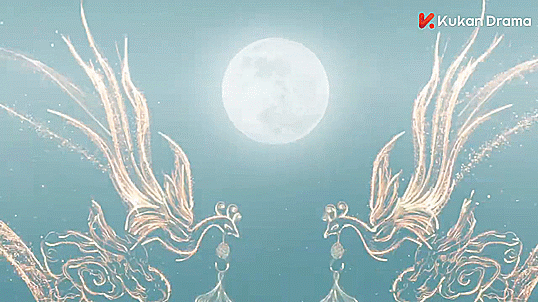
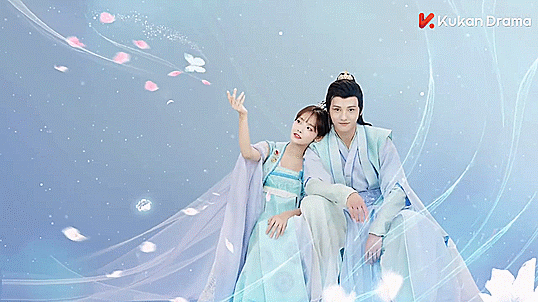
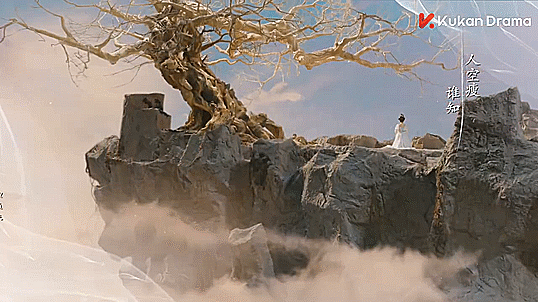


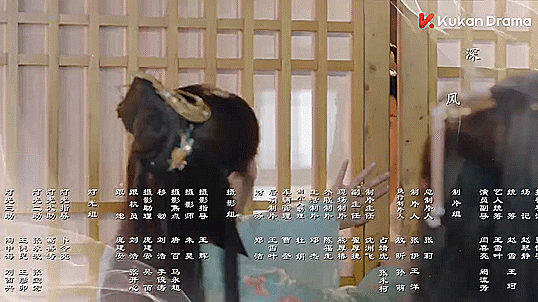
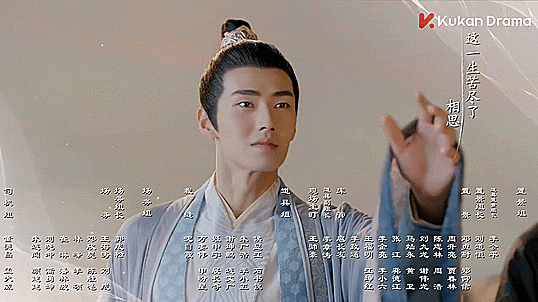
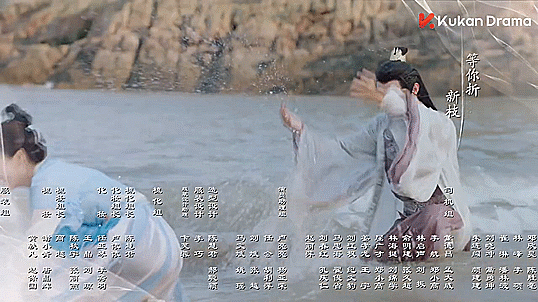
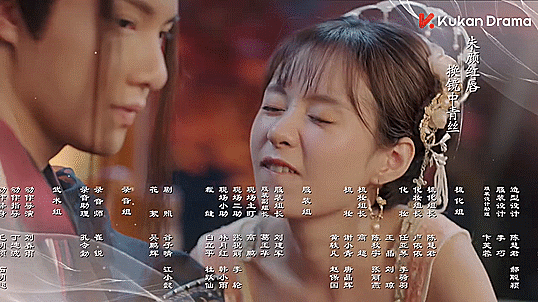
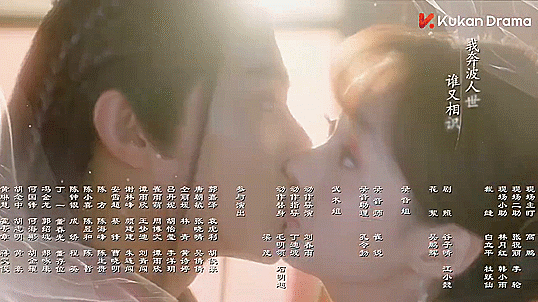
Cdrama: Believe in Love (2022)
Gifs of Ending of cdrama “Believe in Love”
Believe in love EP01 | Huang Sheng Chi, Zheng He Hui Zi, Kevin Xiao (CC subtitle)
Watch this video on Youtube: https://www.youtube.com/watch?v=RZ6ys_-Ik7I


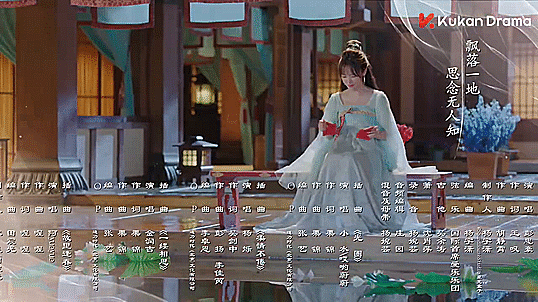
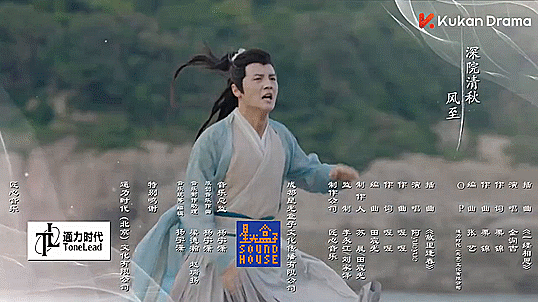
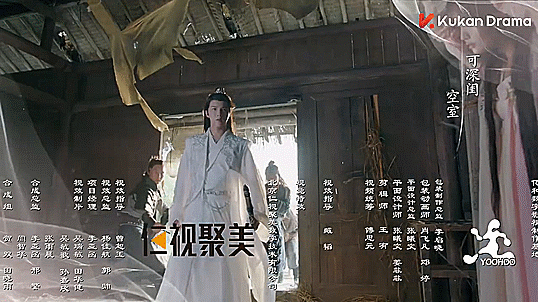

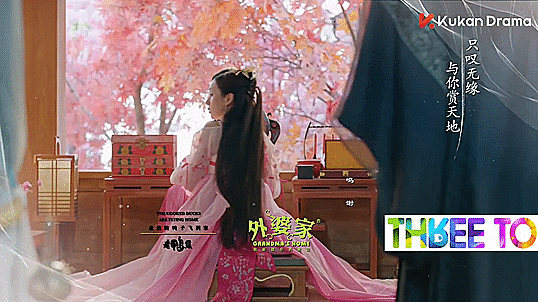
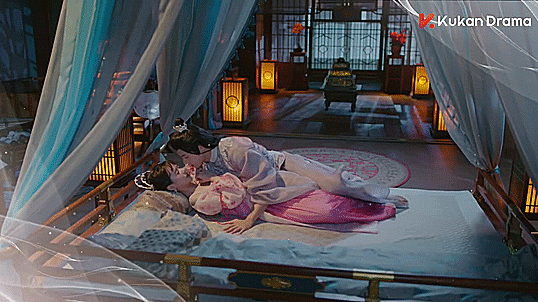
#Believe in Love#花间新娘#Hua jian xin niang#Flower Bride#2022#youtube#episode 1#Youku#KUKAN#cdrama#chinese drama#Huang Sheng Chi#Zheng He Hui Zi#Zhu Rong Jun#Kevin Xiao#Xiao Kai Zhong#Hou Dong#Ma Xin Yu#Li Ming Yuan#Zhang Xin Lei#Shen Yang
13 notes
·
View notes
Text
DMBJ Weibo
Author of Novels & Screenwriter
Nanpai Sanshu (aka Xu Lei & Kennedy Xu) [worked as a screenwriter on time raiders, tomb of the sea, & reunion]
His company [produced the mystic nine, tomb of the sea, & reunion]
Shows’ Weibo
The Mystic Nine [hasn’t posted since 2018]
The Lost Tomb [hasn’t posted since 2017]
The Lost Tomb 2 [hasn’t posted since 2019]
The Lost Tomb 2.5 [hasn’t posted since Aug. 2021]
Ultimate Note [hasn’t posted since Jan. 2022]
Tomb of the Sea [hasn’t posted since 2019]
Reunion: Sound of the Providence [hasn’t posted since Dec. 2021]
The Mystic Nine: Qing Shan Hai Ting [hasn’t posted since Feb. 2022]
The Mystic Nine Actors
William Chan (Fo Ye)
Zhang Yixing (Er Ye)
Ying Haoming (Ba Ye)
Zhang Mingen (Lt. Zhang) [same as un & sand sea]
Zhao Liying (Yin Xinyue)
Harry Hu (Chen Pi)
Yuan Bingyan (Ya Tou)
The Lost Tomb Actors
Li Yifeng (Wu Xie) [account was deleted in 2022]
Yang Yang (Zhang Qiling)
Liu Tianzuo (Pangzi)
Tiffany Tang (Ning)
Ken Chang (Wu Sanxing)
Wei Wei (Pan Zi)
Li Chenhao (High Shao)
The Lost Tomb 2 Actors
Neo Hou (Wu Xie)
Cheng Yi (Zhang Qiling)
Zhang Boyu (Pangzi) [same as LT2.5]
Li Man (Ning)
Liu Xueyi (Xie Yuchen) [same as LT2.5]
Huang Yi (Huo Xiuxiu) [same as LT2.5]
Peng Yusi (Shun Zi) [same as LT2.5]
Yao Lu (Wu Sanxing) [same as LT2.5, hasn’t uploaded since 2019]
He Zhonghua (Chen Pi) [same as LT2.5]
The Lost Tomb 2.5 Actors
Bai Shu (Wu Xie)
Zhao Dongze (Zhang Qiling)
Zhao Ruihuan (Ning)
Bai Yihong (Pan Zi)
Ultimate Note Actors
Xiao Yuliang (Zhang Qiling) [same as sand sea]
Joseph Zeng (Wu Xie)
Chen Fangxu (Pangzi)
Liu Yuning (Hei Yanjing)
Liu Yuhan (Xie Yuchen)
Zhu Jie (Wang Meng) [same as sand sea]
Hankiz Omar (Ning)
Liu Ruoyan (Huo Xiuxiu)
Leanne Liu (Huo Xiangu)
Wang Jinsong (Wu Erbai)
Fan Ming (Wu Sanxing)
Wan Peixin (Pan Zi)
Tao Luoyi (Chen Wenjin)
Tomb of the Sea/Sand Sea Actors
Wu Lei (Li Cu)
Qin Hao (Wu Xie) [his profile picture is still him as Wu Xie🥺]
Chen Minghao (Pangzi) [same as Reunion]
Zhang Meng (Su Nan)
Yang Rong (Liang Wan)
Yu Hewei (Wu Sanxing)
Wang Haoxuan (Su Wan)
Zhu Jian (Yang Hao)
Kudousi Jiang Ainiwaeris (Kan Jian) [he’s aka Wa Er]
Ji Chen (Hei Yanjing)
Hong Xuan (Yin Nanfeng)
He Longlong (Huo Daofu) [same as reunion]
Yu Kaining (Luo Que)
Reunion Actors
Zhu Yilong (Wu Xie)
Huang Junjie (Zhang Qiling)
Mao Xiaotong (Bai Haotian)
Hu Jun (Wu Erbai)
Baron Chen (Hei Yanjing)
Liu Chang (Liu Sang)
Huang Mengying (Ya Nv)
Fan Yize (Er Jing)
Nathan Yu (Wu Sanxing)
Wu Zenan (Li Jiale)
Wu Lipeng (Jiang Zisuan)
Zhong Jiacheng (Jia Kezi)
#dmbj#daomu biji#the lost tomb#the lost tomb 2#the lost tomb 2.5#ultimate note#tomb of the sea#the mystic nine#reunion: the sound of the providence#tmbj#resources
191 notes
·
View notes
Text
International Known Queen & Empress Dowagers (1/?)
Empress Dowager Sun
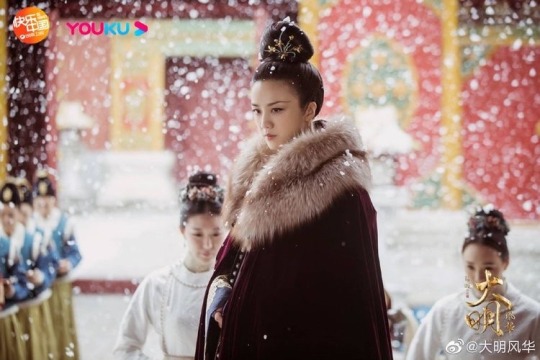
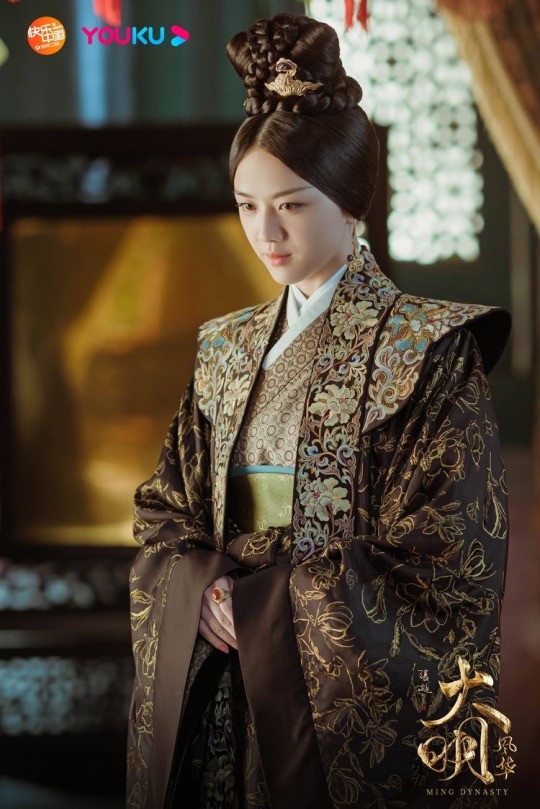
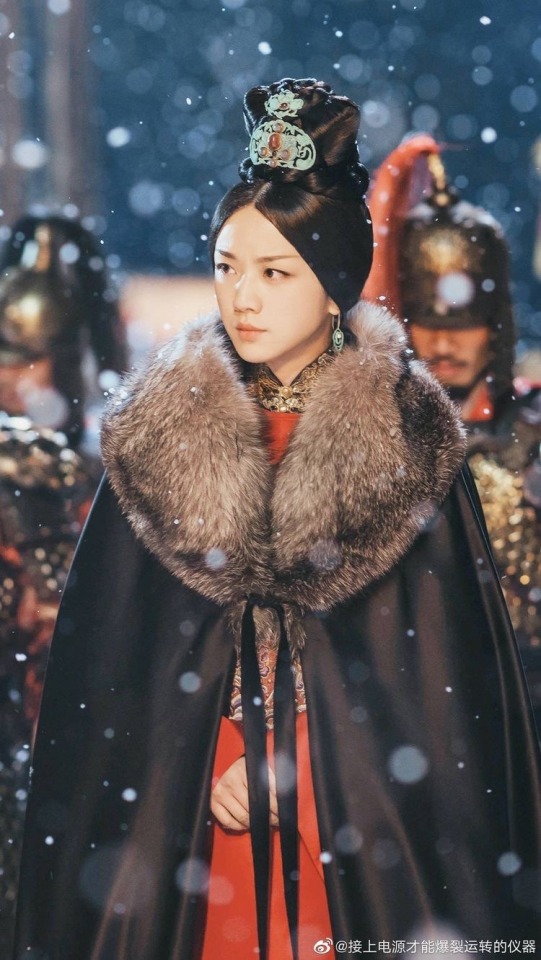

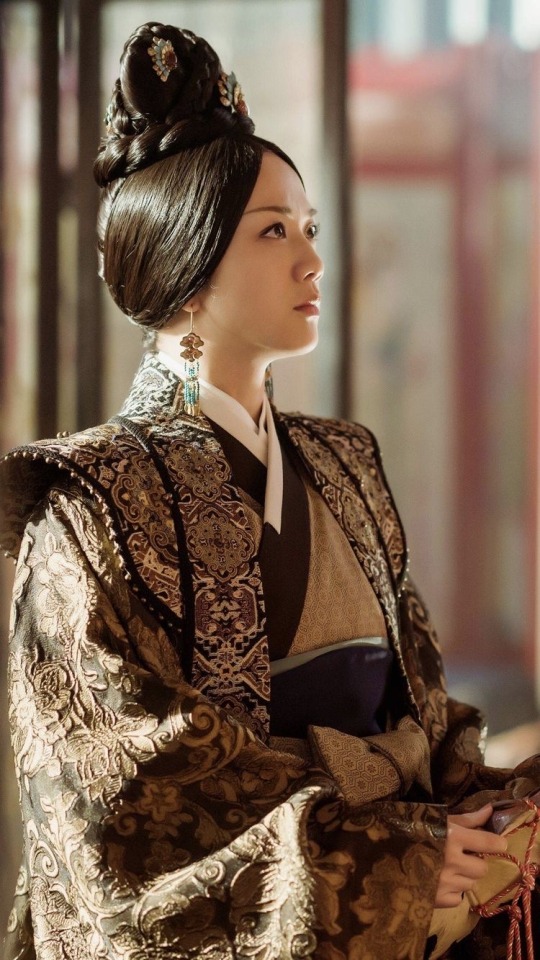


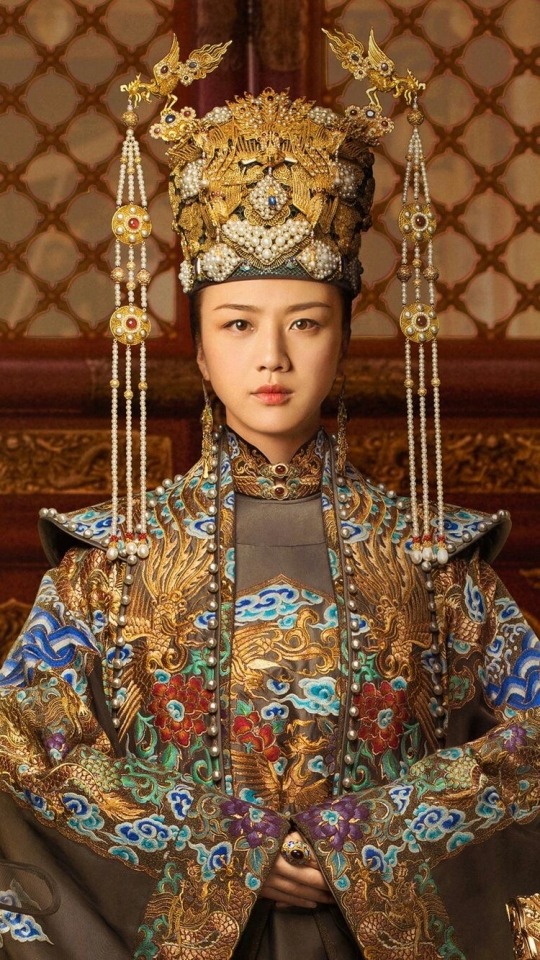
Daughter of Sun Zhong and Dong Yuanzhen
Empress of Zhu Zhanji (Xuande Emperor) and Empress Dowager of Zhu Qizhen (Yingzong Emperor)
Mother of Zhu Qizhen (Yingzong Emperor) and Princess Changde
Grandmother of Zhu Jianshen (Chenghua Emperor), Zhu Jianlin (Prince Zhuang of De), Zhu Jianshi, Zhu Jianchun (Prince Dao of Xu), Zhu Jianshu (Prince Huai of Xiu), Zhu Jianze (Prince Jian of Chong), Zhu Jianjun (Prince Jian of Ji), Zhu Jianzhi (Prince Mu of Xin), Zhu Jianpei (Prince Zhuang of Hui), Princess Chongqing, Princess Jiashan, Princess Chun'an, Princess Chongde, Princess Guangde, Princess Yixing, Princess Longqing, and Princess Jiaxiang
19 notes
·
View notes
Text
Breaking Down: Novoland: Pearl Eclipse BTS “Season of Love” Special Edition

Please take note that I have not read the novel so I don’t know what happens on the novel and this is just my take on what I see. If you have read the novel and already know what's going to happen and if I say something that is wrong, you can just laugh it off or we can talk about this in private (I don’t mind being spoiled of the ending as long as the ending that you are going to share with me is Hai Shi and Fang Jian Ming as end game LOL if not then.............*sigh*)
Before everything else I just need to let it out that this drama is now one of my favorites when it comes to production, set to costume aesthetics out of more than 80+ Chinese Dramas that I have watched.
This special edition BTS video features cast from Yang Mi (Fang Hai Shi), William Chan (Fang Jian Ming) , Xu Kai Cheng (Emperor Chu Zhong Xu), Chen Xiao Yun (Consort Shurong) to Wang Sen (Fang Zhouying), and the drama’s Executive Producer Gao Chen 高琛 , Costume Designer Fang Si Zhe, and Art Director Shang Chang Yong.
STORY
It has a unique worldview. This TV work is sad but beautiful love story that resonates more with female viewers. The love in this series is actually tormenting. We often use the word “tormenting”, tormenting love.
Gao Chen

Fun Fact: Gao Chen is the Executive Producer for Novoland: Pearl Eclipse as well as more of Yang Mi’s dramas like Storm Eye, Eternal Love and Eternal Love of Dream, to Les Interprestes back in 2016. He is a Producer for some of Jay Walk Studio dramas including Dilireba’s The Flames Daughter back in 2018.

This part is where I got confused, worried yet hopeful all at same time. The love story between Hai Shi and her Master Fang Jian Ming is really something that I look forward on the show. Then there were clips of Hai Shi and Fang Jian Ming meeting again, with her now sporting a woman’s outfit and seemingly avoiding or arguing with him? and from the teasers, OST and other snippets that I have seen, this couple will definitely have a fall out and I just hope that it won’t last too long.

“Tormenting” was repeatedly mentioned in the video and it was also the tittle for the other trailer for the show Tormenting Love Between Yang Mi & William Chan so I’m already preparing my heart for it but during Yang Mi’s interview she mentions
Its tormenting throughout the story but if you stick to the end, you’ll find sweet love. Don’t give up. That’s life
Yang Mi
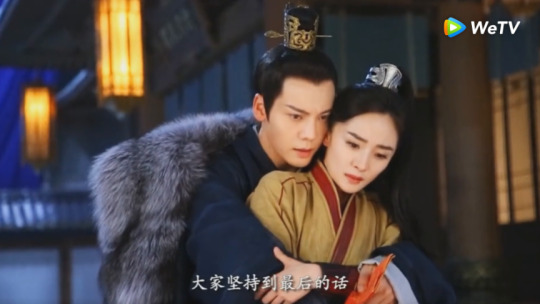
So is it wrong for me to hope that they do have a happy ending when the Main Lead herself kind of insinuates that if you stick to the end, you’ll find sweet love? like does that not sound as a happy ending?

but this is where I kind of worried cause sweet love can mean different things and that it was not mention on which love? ‘cause there have been scenes of Hai Shi being involved with the Emperor and it seems like she will start something something with him and the synopsis on WeTV does not help at all
Hai Shi then becomes the personal guard of the emperor and she starts to be interested in him, and some misunderstandings rise between them. When the emperor finds out that Hai Shi is a girl, he starts having feelings for her. Hai Shi will have to face her own feelings towards Fang Zhu and the emperor.
WeTV

But then again promotions were of three couples, Hai Shi-Fang Jian Ming, the Emperor and his Consort Shurong and Zhou Ying and Zhe Liu.

COSTUME
The artistic style of this series is slightly nouveau. All the costumes are typically of Art Deco Style.
Fang Si Zhe
Fun Facts: Art Deco is known for appealing lines of nature, such as oriental cultural patterns and geometrics. It uses bright colors with strong contrast
We established effective communication with the designers since the beginning. So we follow the styles of the scenes.
Fang Si Zhe
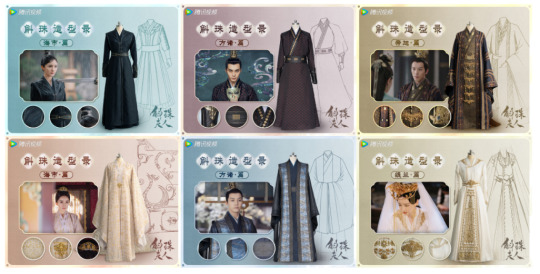
The costumes were definitely really good on this drama and I have a huge trust on Fang Si Zhe’s taste and designs ever since I feel in love with Lu Yi in his absolutely gorgeous Jin Yi Wei uniforms on Under the Power (2019) who was played by Ren Jia Lun
Fun Facts: Fang Si Zhe is the costume designer for dramas like Scarlet Heart (2011), General and I (2017), Under the Power (2019), and the wonderful drama Love and Redemption (2020). His upcoming dramas are also to look forward too from Yang Zi and Cheng Yi’s Immortal Samsara (2022) and Zhang Ling He and Zhai Xiao We’s currently filming drama adaptation of Heaven’s Official’s Blessing (2022).

Every costume has its distinguished character.
Chen Xiao Yun
Every character definitely have their own styles and color schemes. and definitely one of my favorites are Hai Shi’s wardrobe.
I have more than one armor of all kinds of styles such as light ones, soft ones, and heavy ones. Anyway, I'm an "Armored Warrior" . Armor Warrior Fang Hai Shi
Yang Mi
I love the different shades and tones of blue that Hai Shi wears throughout the drama. From the almost black deep blue outfit that she wears working for the Jifeng Pavilion, her disguise when she was on the streets of the capital on episode 10, the blue-green outfit when she was caught on the rain on episode 11, the light blue inner clothing on her armor before she left for her first assignment, to her official uniform as the Staff Officer on Huangquan Pass.

PRODUCTION
Every little detail has been attended to. Hai Shi's sword is rather special. Her weapon adopts characters of her birthplace, and her background or geographical elements. That's how the sword is made. Its handle is inlaid with seashells to connect with her birthplace.
Shao Chang Yong
Fun Facts: Shao Chang Yong is the Art Director for a lot of really famous dramas. From Cheng Yi and Zhang Yu Xi’s historical drama Stand By Me (2021), Xu Kai’s Ancient Love Poetry (2021), Seven Tan and Wallace Chung’s The Sword and the Brocade (2021), another Cheng Yi Drama The Promise of Chang’An (2020), one my favorite Yang Mi dramas Legend of Fu Yao (2018), Nirvana on Fire 1 and 2 to Wallace Huo’s Love Me if You Dare back on 2015. Definitely a veteran Art Director who has a quite a knack for Historical dramas.

I really love the white sheath as well as the minor details on of Hai Shi sword. and then looking closely to her bow, (she is a gifted archer after all) the metal part of the bow are made of some kind of wave patterns (am I reaching? LOL)
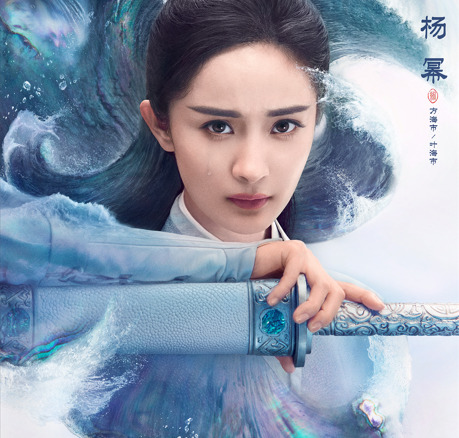
We have built in all 200 or more scenes.
8 indoor Studios that cover 50,000 sqm. Over 200 scenes, most built for location shooting
Shao Chang Yong

Jifeng Pavilion is my favorite. A lot of wood elements are incorporated. Its simple but from the simple style, you can find elegance.

illiam Chan
Oh my! Same, my favorite location on the drama is the Jifeng Pavilion not only because this was the most used set on the early parts of the drama but because of how therapeutic it makes me feel when watching it.
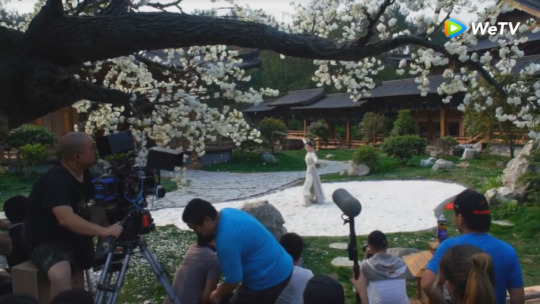
There are all kinds of circulars, a bridge and a pond, trees and sand in the manor
Yang Mi

I think that I have seen a very similar set and correct me if I’m wrong but is this the same set for One and Only? Zhou Sheng Chen’s manor where Shi Yi lived most of her teen life? Cause it looks absolutely similar, although minor details are of course different but the layout is quite the same.
Fabric Office is built in our original design.
Gao Chen
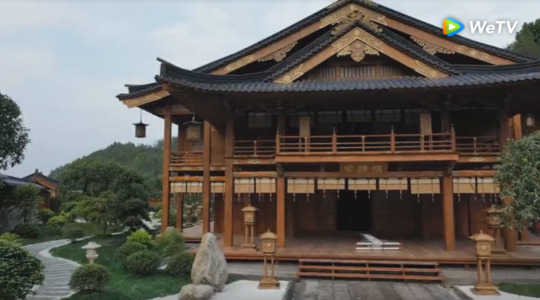
It rose from the ground and its built as a real building. It has two stories, the ground floor is for weaving and embroidering desks. the second floor is for demonstration. the construction took two or three months.
Shao Chang Yong

CHOREOGRAPHY
There are a lot of action scenes
Yang Mi
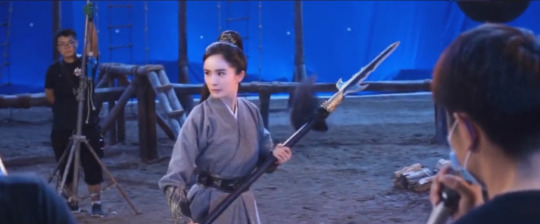
During the shooting, it gave me a feeling that Fang Zhu is like a fairy. the visual effect is perfect. Most are long takes. I guess its because of the costume. because its fluttering when were fighting. the action part is quite different in the series.
William Chen

The most challenging part for me is to wear armors, to fight for real.
Yang Mi

Before each action scene, I was like "oh, Were gonna do action scenes today. So tired." but when it began, I couldn't have enough.
Xu Kai Cheng

I did my best to make each move perfect
Wang Sen

MESSAGE FROM THE PRODUCER

In every one's lifetime, as life unfolds, you change at certain stages. Every single role in this series has made the right choices, I think , or has done more than responsibilities require them to do. so its a leap. I hope the audience will love the series and every single role in it. Hope you can find from the series whatever you expect or whatever you like.
Gao Chen
Link: https://wetv.vip/play/1pka1m9w1yxm0l0-Novoland-Pearl-Eclipse/v0041nxr13q-BTS-%22Seasons-of-Life%22-Special-Edition-%7C-Novoland-Pearl-Eclipse
#Novoland#novoland pearl eclipse#BTS#Behind the Scene#Yang Mi#William Chan#xu kai cheng#Chen Xiao Yun#Wang Sen#Gao Chen#高琛
14 notes
·
View notes
Text
Commentary on the Warer Classic: Kunlun
[We return again to Kunlun and its many marvels. Attempts by some authors to equate Kunlun with Anavatapta from Buddhist tradition are difficult to reconcile with Daoist supernatural geographies, which I suppose is not too surprising.
Dongfang Shuo was a historical person who lived in the times of Emperor Wu of Han. The Records of Ten Islands and Classic of Gods and Wonders, though attributed to him, are quite likely to be much later works though.
Mr. Shi's discussion: Fotutiao arranges Classic of Mountains and Seas to say: South of the Western Sea, adjacent to the Flowing Sands, behind of the Red River赤水 and before of the Black River黑水 there is a great mountain, named Kunlun崑崙.
He also says: Six hundred li west of Zhong Mountain鍾山 is Kunlun Mountain崑崙山 from where sets out five rivers, carrying on hence the Account of Fotutiao.
Also recently pushed forward and obtained Kang Tai's Account of Funan. The Account's Kunlun Mountain崑崙山 exactly combine with Tiao's. According to the Account, from Jiao province交州 you arrive at the near-most of Tianzhu天竺. Tai's Account likewise knows that Anavatapta Mountian阿耨達山 is Kunlun Mountain崑崙山.
Shi states: Depending perhaps on Tiao's Account, openly making explanations, and then circulating them as the Map of the Western Region, to then tell of [Zhu?] Faitai. Faitai uses the common to see the unusual. He speaks of various famous people from Han and onward [?], he does not respond to the He河 being several thousand li south of Dunhuang敦煌, and does not know where Kunlun崑崙 is.
Shi states: Then the book says: Relying on Transmittals on the Majestic Son of Heaven, King Mu at the sides of Kunlun崑崙 and upon the Jade Pool瑤池 toasted the Queen Mother of the West, and states the distance to Zongzhou宗周, the Chan瀍 and Jian 澗, eleven thousand, one hundred li, how might it not be like Tiao tells? When Sir now sees Tai's Account, it is not making previous people unknowledgeable. But from now and afterwards then knowing that Kunlun Mountain崑崙山 is without a Hot Hill熱丘, how then to state it is outside of the foreign states?
I have examined Mr. Shi's words, but not yet made satisfactory proof. The Majestic Son of Heaven, Bamboo Book, and the Classic of Mountains and Seas all were buried and concealed years long past, the bamboo slips and leather are scarce and broken off, the books and records in scattered order. It is difficult to sew and patch them together. Later people made use of combining, but often deviated from the distant ideas. Reaching the desire to inquire into the earth's veins and streams, they do not fit together with the Classic. Inspecting the journeys and measuring the paths, assuredly they have no meetings with themselves. Mr. Shi did not restore to the root the vast causes of their multitude returns, [but] displayed his unsparing interest [?], to separate their faults, and not what is settled.
Now according to the Classic of Mountains and Seas which says: The Kunlun Barrens崑崙墟 are in the north-west, they are the Deity's lower capital. The barrens of Kunlun崙崑 are eight hundred lisquare, and ten thousand ren tall. Upon them are wooden standing grain. On the sides there are nine wells with jade as the enclosure. On the sides there are nine gates, the gates have enlightened beasts defending them. It is the place where are the hundred gods.
Guo Pu says: Separate from them there is Lesser Kunlun小崑崙.
Also according to the Book of Huainan, upon Kunlun崑崙 there are wooden standing grain, gem trees, jade trees, and jadestone璇 trees. The unding trees are west of them. The sand crab apple trees and and malachite are east of them. The scarlet trees are south of them. The blue-green trees and chalcedony trees are north of them. There are four hundred and forty gates, between the gates are four hamlets, and between the hamlets are nine chun. A chun is a zhang and five chi. On the sides are nine wells, with jade horizontal supports on their north-western crooks. The northern gates open to admit the winds that do not circle [?].
The slanting palace, revolving chamber, suspended gardens, cool winds, and fenced paulownia are within of Kunlun's崑崙 opening and closing gate. This is its wide-apart park. The pool of the wide-apart park is irrigated with the Yellow River黃水. The Yellow River黃水 circles three times and returns to its source, it is spoken of as the Cinnabar River丹水. [Those who] drink from it do not die.
The He River河水 sets out from its north-eastern corner. The Red River赤水 sets out from its south-eastern corner. The Immense River洋水 sets out from its north-western corner. Altogether these four rivers are the divine springs of the Deity, which harmonizes the hundred herbs, and which moisten the ten thousand things.
The hills of Kunlun崑崙, some are multiple times above them, they are spoken of as the Mountains of Cool Winds涼風. Those who climb them do not die. Some are multiple times above them, they are spoken of as the Mountains of the Dark Garden玄圃. Those who climb them then become unearthly, and are able to make wind and rain. Some are multiple times above them, these then uphold High Heaven. Those who climb them then become divine. These are spoken of as the dwellings of the Grand Deity. Yu then used the comforting earth to fill in the vast flood, and used it as the name for a mountain, digging out the Kunlun Barrens崑崙虛 to use as its lower ground.
Gao You says: Some of the land was made into a pool. Hence conforming with Fotutiao's explanation. Anavatapta's阿耨達 six rivers are the boundaries of Congling 蔥嶺 and Yutian's于闐 two rivers. He and the classics, histories and various books fully are inconsistent and different.
Also according to the Records of Ten Continents, Kunlun Mountain崑崙山 is the xu戌 land of the Western Sea and the hai亥 land of the Northern Sea. The distance between the banks is a hundred and thirty thousand li. There is the Weak River弱水 that encircles and goes around the mountain. To the south-east it joins the Piled-up Rocks Garden積石圃. To the north-west it joins with the House of the Northern Door北戶之室. To the north-east it overlooks the Well of Great Width大闊之井. To the south-west it is near the Valley of Accepted Abyss承淵之谷.
These four corners are great mountains, in truth the supporting buttresses of Kunlun崑崙. The Piled-up Rocks Garden積石圃 is the southern head. Formerly the Queen Mother of the West informed King Mu of Zhou, stating: The distance to Xianyang咸陽 is four hundred and sixty li, the mountain's hight above the level ground is thirty-six thousand li. Upon it there are three corners. Their faces are square, ten thousand li wide, and shaped like a resting pot, narrow below and wide above.
For that reason they say Kunlun Mountain崑崙山 has three corners. One of the corners is straight north, shielding the glow of the Morning Star [Mercury], its name is Wind-on-the-Fells Summit閬風巔. One the corners is straight west, its name is Dark Garden Terrace玄圃臺. One of its cornes is straight east, its name is Kunlun Palace崑崙宮. In that place there are piles of gold, it is the Heaven-Walled City天墉城. Its faces are a thousand li square. Upon the city are installed five gold terraces and twelve jade towers. Its Northern Door Mountain戶出山 and Accepted Abyss Mountain 承淵山 also have walled cities, with gold terraces and jade towers similar to the first one.
The watchtower of abyssal quintessence, the hall of brilliant blue-green stone, the chamber of carnelian splendour, the violet, bright blue, and cinnabar houses, the bright torches with sunshine, the vermilion-coloured clouds and nine lights, the place where the Queen Mother of the West governs, the place where the realized officials that are transcended and supernatural revere, the highest exchange with the whirling armillary, the primordial vapour flowing and spreading, the jade transverse's regular management, where to follow the Nine Heavens and attune yin and yang, the throng of things and crowd of living beings, where the rare, strange, and special sets out, all are here. The Heavenly people, manifold and multiple, cannot be drawn up and recorded. North of there, outside the seas, also there is Zhong Mountain鍾山. Upon it there are gold terraces and jade watchtowers, and it also enclosed by the primordial vapour, the place where the Heavenly Deity resides and governs.
Examining the words of Dongfang Shuo, and the Classic's text of fifty thousand li, they argue against Fotutiao and Kang Tai's Accounts. Within the Six Cardinal points, and what is concealed by rivers and marshes, what is large is not vast, what is small is not tiny, what exists is not become present, what is hidden is not absent. Among them [cases of] the same name but different regions, with claims and stories making chaos of each other, are also not few. Reaching the Eastern Sea's東海 Fangzhang方丈 [“Square Staff”?], it likewise has what is claimed about Kunlun崑崙. The Western Continent's西洲 Copper Pillar銅柱 also has the government of the Nine Offices.
Dongfang Shuo's Records of Ten Islands says: Fangzhang方丈 is at the exact centre of the Eastern Sea. From the eastern to western or southern to northern banks, the distance from each other is exactly the same. The sides of the Fangzhang are each five thousand li, upon it solely is the gathering place for the crowd of dragons. It has palaces of gold, jade, and glazed glass, which are the places governed by the Three Heavenly Ministers' instructions. Those among the crowd of transcendents who do not intend to climb to Heaven all come and go.
Zhang Hua's preface to Dongfang Shuo's Classic of Gods and Wonders says: Kunlun崑崙 has the Copper Pillar銅柱, its height enters into the Heavens, and it is spoken of as the Heavenly Pillar天柱. Its circumference is three thousand li, and it circles round [?] like a trimmer knife. Below there are rotating houses, the seat of the transcendents' Nine Offices. Above there is a great bird, named Xiyou [lit. “Rare Possession”]. Turning south, it extends its left wing to covered the Honoured King of the East, and its right wing the Queen Mother of the West. On its back there is a small spot without feathers, ten or nine thousand li, where the Queen Mother of the West yearly climbs on top of the wings, to go to the Honoured King of the East.
For that reason its pillar inscription says: “Its height enters into the Heavens, circling round like a trimmer knife, skin and body the finest quality. Its bird inscription says: “There is the Xiyou, green-red, glittering and glimmering, it does not cry and does not east. To the east it covers the Honoured King of the East, to the west it covers the Queen Mother of the West. The Queen Mother wished to go east, and climbed it to pass through herself. Yin and yang are necessary for each other, and indeed meet in beneficial labour.”
The Map of the Hidden Jia to Open Mountains says: For what the Five Dragons were teaching and traces from the Heavenly Augusts, look in Outside Nowhere's無外, Pillar Province柱州, on top Kunlun Mountian崑崙山.
Mr. Rong's Commentary states: The Five Dragons governed in the Five Regions, and were the gods of the Five Agents. The Five Dragons submitted to the Heaven August brothers, who where twelve people. They divided the Five Regions to become Twelve Sections, regulated the traces of the Five Dragons, and acted with nothingness to become transformed by it. Where Under Heaven the transcended sages govern is in Pillar Province柱州, on top Kunlun Mountian崑崙山. The mountain of Outside Nowhere's無外 is twelve thousand li south-east of Kunlun崑崙. The Five Dragons and Heavenly August all set out from within there, and become the twelve seasonal gods.
The Classic of Mountains and Seas says: The Hills of Kunlun崑崙 are truly indeed the Deity's lower capital. Their god Luwu is Minister of the Nine Sections of Heaven and the enclosed seasons of the Deity.
However within the Six Cardinal points, what they contain is far-distant. With the shrouded that causes to bring forth the marvellous, it is difficult to get to the root of the actual situation. With the ten thousand phenomena and distant pinnacles, thoughts cut across the fundamental search. [If] oneself does not climb a pair of dragons on the Cloud Carriage-Track, and gallops eight steeds on Tortoise Road, together with Xuanyuan question the Hundred Spirits, and side-by-side with Yu the Great assembles the gathered calculations, then the explanations of Ruists or Moists, who can tell them apart!
15 notes
·
View notes
Text
Koei Warriors Retrospective Part 7: Dynasty Warriors 5
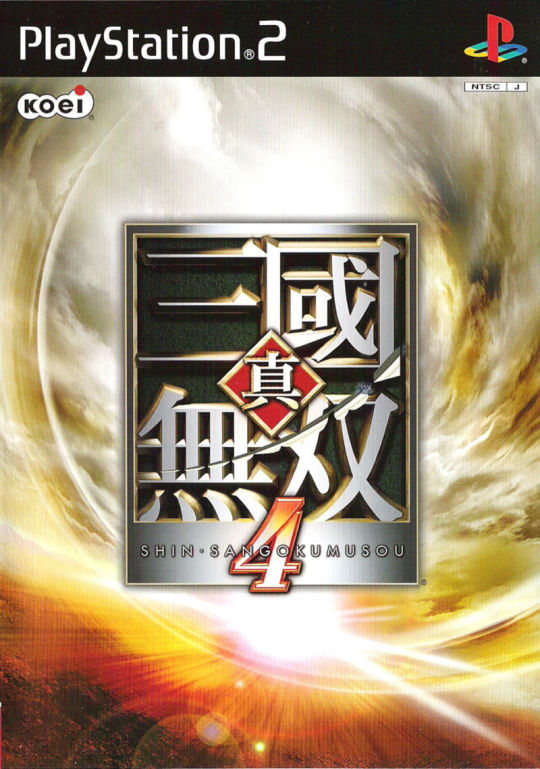

Dynasty Warriors 5 (真・三國無双4) Platforms: PlayStation 2, Xbox Release dates: Japan: 24 February 2005 (PS2)/25 August 2005 (Xbox) USA: 29 March 2005 (PS2)/13 September 2005 (Xbox) Europe: 24 June 2005 (PS2)/23 September 2005 (Xbox)
We have now reached the pinnacle of the classic era. With rumours of the PS3's development spreading among gaming circles, Dynasty Warriors 5 was created to be a culmination of the series' PS2 era. With the amount of spinoffs using character designs from this game, this is one of the most iconic games of the series.
I brought this game sometime in 2007 on a bit of a whim after having played the PSP game over and over again for at least a year. I was at a GAME store on a day trip out of town (this was a time when GAME, a UK chain, existed in Australia) and I asked the worker there if they had any Dynasty Warriors games for the PS2. They went off and got two games of which I had to pick one; one was DW3XL and the other was DW5. I picked this game (preowned for $40) and looking back, I made the right choice.
Anyway, let's dive right into my childhood and I'll try not to let toxic nostalgia blind my judgement of this game.
As a side note, this instalment will also serve as a tribute to Taiki Matsuno, who voiced Ling Tong and Liu Shan in the Japanese dub.
Dynasty Warriors 5
This game introduces six new characters. Shu and Wei have two characters each in an effort to balance out the rosters for the Three Kingdoms, while Wu and Other have one new character:
Shu
Guan Ping
Xingcai (based on Liu Shan's first two wives, who are both Zhang Fei's daughters)
Wei
Cao Pi
Pang De
Wu
Ling Tong
Other
Zuo Ci
Musou Mode goes back to being individualised. In an effort to put focus on the individual warriors, the narration segments are replaced by character narrations between battles and the commander/strategist introducing each battle (the two parts are merged into the battle introductions for the Other characters). The narrator's role is relegated to the ending narrations, where the final sentence changes depending on the difficulty you play.
Most characters have 5 stages for their Musou Modes (making it a seamless experience coming from the PSP game). Xiahou Dun, Dian Wei, Sun Ce and Guan Yu have an additional stage unique to them (Guan Yu's Escape, Wan Castle, The Trials of Sun Ce), Other characters (except for Zuo Ci) have 4 stages while Liu Bei, Cao Cao, Sun Jian and Zuo Ci have 8.
Speaking of Zuo Ci, he does appear as an enemy, but only once or twice in the Musou Modes for Cao Cao and Xu Zhu. He doesn't even appear as an ally in Liu Bei's Musou Mode even though he claims to support him.
For the first time, the battle lineups are more historically accurate, meaning that characters don't appear in battles after they historically died. Therefore, you won't see Liu Bei, Cao Cao and Sun Jian all the way to the end unless you play as them. Sometimes you'll also have Musou Modes containing stages set after certain characters' deaths just to fill up the quota, or historically deceased characters just appearing in battles after they died for some reason. Examples for the first case include Dian Wei having battles after Wan Castle or Sun Ce and Da Qiao's final stages being Xiakou when they never appeared for anyone else. For the second case, Taishi Ci historically died in 206 (or nearly a decade later at the Battle of Hefei according to DW7 and 8), yet he appears at the Battle of (New) Hefei Castle. Huang Zhong died a year after the Battle of Mt. Dingjun, but he lived until the Battle of Yiling (in the novel) or the Battle of Baidi Castle (in this game).
Also as a result of giving everyone 5 stages in Musou Mode, a bit of stuff concerning minor warlords is cut, such as Sun Ce fighting Yuan Shu or Huang Zhong and Wei Yan serving Han Xuan. Heck, the only times we see Yuan Shu is at Sishui Gate and at Xiapi if his reinforcements arrive, which is guaranteed to be averted if the flood attack on the castle succeeds (in Cao Cao's scenario). Yuan Shu's reinforcements in that stage consist of two generals with four subofficers each in Cao Cao's scenario compared to one general with three subofficers in Lu Bu's scenario. Honestly, I'd rather see Yuan Shu's reinforcements being overrun by my allies had the flood attack succeeded. To make up for it, there is the Battle of Changshan in Yuan Shao, Diaochan and Lu Bu's stories, featuring Gongsun Zan as the enemy commander.
Battles in Free Mode are sorted chronologically and only contain stages that appear in Musou Mode. As such, most battles only have one or two sides to play as, with the exception of Fan Castle which has three. In addition, no two battles share the same map, which creates a bit of confusion when it comes to Nanzhong as there are 4 maps set in the region, but the battles are named differently which does help. This is the only game to feature conflicts set before the Yellow Turban Rebellion, even if they are mostly fictional battles set up to have Dong Zhuo, Yuan Shao and the Nanman fight the Yellow Turbans.
The battle difficulty is now set as you select the stage or Musou Mode instead of through the settings like in previous games. What was the Very Hard or Expert difficulties, being a step up from the Hard difficulty, is now the Chaos difficulty for the first time in a mainline game. Chaos difficulty can be unlocked by clearing Lu Bu's story in Musou Mode.
Challenge Mode consists of Time Attack, Rampage (Endurance from DW4), Bridge Melee and new stage Sudden Death, where you defeat as many enemies before you die in one hit.
The weapon and item listings are separated out from the Encyclopedia into a new Camp section where you can see the weapons listed under each character. You can also explore the character models as well, rotating them and viewing the different costumes using the L1/R1 and L2/R2 buttons respectively. The Encyclopedia retains the officer biographies while also introducing an overview of the late-Han and Three Kingdoms periods, from the Yellow Turban Rebellion to the fall of the Three Kingdoms and their unification under Jin.
The battle mechanics by now should be familiar to you whether you're coming from earlier games or the PSP game, but even if you're new to the series the controls are intuitive. Up to six attacks can be performed depending on the weapon. This is also the first mainline game to not have the charge lock-on mechanic that was the bane of past games.
Characters whose C1s grabbed enemies have had them changed to perform unique attacks, most of them being stomps that do little damage. Characters whose C1s shot magic shots have been changed to elemental orbs that explode after a few seconds. All C5 Charge Drives have been changed to Charge Shoots that knock enemies up into the air. Some characters have had their C6 changed as well.
Jump Charges and True Musou Attacks have been changed to be unique between characters. In the case of Jump Charges, those usually consist of attacking enemies multiple times in the air or firing a shockwave straight ahead or towards the ground. Nearly half of the movesets in this game have Jump Charges that retain or incorporate the old style of "smash into the ground", namely:
Guan Yu
Zhang Fei
Xingcai
Dian Wei
Xu Zhu
Xiahou Yuan
Sima Yi
Cao Ren
Zhou Yu
Taishi Ci
Sun Quan
Lu Meng
Sun Ce
Diaochan
Lu Bu
Dong Zhuo
Yuan Shao
Meng Huo
Great Sword (Fu Xi/CAW)
Rapier (Nuwa/CAW)
This game introduces a new mechanic known as Evolution Attacks, which is an extension of the Normal Attack string from 6 to 9 attacks (with no additional Charge Attacks). To trigger this, you need a weapon that has that capability (some third weapons and all fourth weapons) and your Musou Gauge must be filled.
Musou Rage is another new mechanic introduced in this game. When you obtain a Musou Token, pressing R3 will activate Musou Rage, which doubles your attack, defence and attack speed and prevents you from flinching when being attacked. It also enables you to perform a True Musou Attack regardless of health. However, you are still prone to taking damage even though you don't flinch, which can be detrimental against juggernauts or Lu Bu. Enemies, particularly those with a hyper mode aura about them, can enter Rage Mode as well when their health goes down to a certain level. Although Musou Tokens can be found at random around the battlefield, one is guaranteed to drop every 100 KOs if you are using your fourth weapon.
Weapons are no longer levelled or categorised, meaning that you can have up to four weapons of any level or attribute. Weapons can have up to 5 attributes (out of 10) and each weapon can have a weight of light, medium or heavy. Compared to medium weapons, light weapons are faster but they are weaker (at 75-85% power) while heavy weapons are slower but stronger (at 125% power). And as mentioned, some third weapons and all fourth weapons are compatible with Evolution Attacks.
Battlefield items remain similar to those from DW4 with separate saddle and orb categories. Orbs are no longer randomly obtained from items, but are obtained as rare items on Hard or Chaos difficulty like with fourth weapons (other rare items are still available on any difficulty). Elemental attacks no longer require a full Musou Gauge to trigger. The number of items you can equip is now balanced among the cast; you start off with 2 items and can equip up to 5 at the maximum rank.
Bodyguards are no longer the groups of soldiers that level up into officers that was the case in previous games; in order to accommodate more soldiers appearing on the screen, you now only have one bodyguard officer accompanying you in battle. Bodyguards can wield swords, spears, crossbows/bows or staffs/fans depending on their gender and as they level up (to a maximum of 5), they can learn an element and an ability. If your bodyguard wields a fan, they can heal you when in trouble (which is helpful in Chaos difficulty where meat buns are scarce and only provide +50 health), otherwise they will mostly assist with attacks. At the end of a battle, Shui Jing (Sima Hui) may recommend a new bodyguard to you. Their development potential is noted by how many kingdoms they are famous in and their ability development is noted by their talent evaluation. Up to 8 bodyguards can be kept in total and their names and attributes are randomised. However, I hate that the only line the bodyguards speak is when they apologise after being killed. Give them some praise phrases, for God's sake.
A new stage mechanic introduced in this game are bases, of which there are three types. Attack bases attack enemies around it with catapults or arbalests and the soldiers inside can perform group Charge or Musou Attacks. Defence bases have soldiers with shields and they will guard your attacks from the front. Supply bases can provide supplies to boost the morale of other units and use items to buff the stats of every allied soldier (and officer) in the base when enemies are within. Defeating the guard captain will conquer the base and cause other bases to become confused (stop functioning).
Some stages have neutral bases that fall to the allied/enemy forces depending on which unit enters them first, but a base doesn't switch sides after it has been conquered. I would have liked to see that be a thing but if the battle's favouring your side then I guess there's no point in it. If there are enemies outside an allied defence/supply base and the gates are closed while you are inside, you can use the ramps on the side to escape. Getting back in is a bit of a problem and there is no way to take your horse with you as well. It's almost like this problem can be solved with a mechanic from another game.
Strongholds, known as checkpoints in this game, are carried over to this game as well, spawning reinforcement soldiers which can prove beneficial in racking up your KO count. Unlike in previous games, checkpoints will belong to your side (ie. stop working for the enemy) after you defeat the enemy guard captain for them. In previous games, defeating the enemy guard captain would make them stop working at all, while in DW4, checkpoints may spawn again for the enemy after a while if the battle calls for it.
Interim saves no longer bring you back to the main menu like it did in previous games, however depending on the difficulty, you have a limited number of saves. Novice (in XL) and Easy difficulties can save unlimited times, Normal difficulty allows you to save 3 times, Hard difficulty only allows you to save once and Chaos difficulty doesn't allow you to save at all.
And now for some quick-fire thoughts:
Enemies in this game can perform group attacks, which is precipitated by them moving back.
Enemy officers will glow red in a stance when they are about to perform their Musou Attack, allowing you to move away or quickly attack them before they unleash it.
Destroying archer towers can cause damage to anyone nearby that it falls on.
HP bars can have a second layer, something that would be seen for allies and enemies alike from here on out.
A white ring will appear around horses when you go near them, indicating that you can mount and use them in battle.
In older games, you would have encounter and retreat/death scenes when facing enemy player character officers. These treatments are now reserved for so-called "highlight battles" with hyper mode aura powered officers in the former case and all enemy commanders in the latter case. Overlaps for both cases do exist.
Towards the end of each battle when your forces' morale is high, your allies will offer passing comments when you pass by them.
And finally, I find it interesting that the HUD shows the character's name written in Chinese/Japanese in all versions. It's probably just how the HUD is designed and they probably could have put the English name underneath the side profile portrait, but it's a nice touch nonetheless.
Dynasty Warriors 5 Xtreme Legends


Dynasty Warriors 5 Xtreme Legends (真・三國無双4 猛将伝) Platforms: PlayStation 2 Release dates: Japan: 15 September 2005 USA: 15 November 2005 Europe: 10 February 2006
Before we go on, can we take a moment to appreciate how incredible the Western box and promo arts are? It looks like a cross between Japanese manga and Western comics, but if you say that the tagline "Get ready for some Chinese take-out!!!" is racist, I will call you a snowflake.


So yeah, despite me playing Dynasty Warriors 5 for nearly a decade, I never really got into the Xtreme Legends expansion for it until quite recently with this game and Special. 10-year-old me would have loved what it had to offer.
Legend Mode in this game is different compared to 4XL. All the characters are featured in one of 18 new maps created for this game, with 6 of those being rehashes of maps from the vanilla game. Presumably due to the 5-stage limit for Musou Mode, the Battle of Shiting and The Two Qiaos from 3 are relegated to this mode. There's another Nanzhong stage in there, bringing the total to 5 for the entire game. The difficulty for those stages is not mentioned, but I've seen it stated that they are equivalent to 5-star stages. Clearing each map once allows you to play them as any character.
After being removed from the original game, Edit Mode is back in the expansion. You can create up to 10 custom characters and the game does give you a little more freedom in terms of choosing your face, body, armour/outfit and moveset, but I hate how the profile images have the same (colour) clothes without any head armor where applicable. But that's not all.
To tie into the new Edit Mode, Destiny Mode has been introduced, allowing you to build up your character in a manner similar to SW1's New Officer Mode. You set up your character, assign them a weapon and pick a character out of the Three Kingdoms who you wish to serve under. From here, you start off as a Private and work your way to being a Lieutenant General over 8 stages.
Between stages, you obtain skills that not only allow you to expand your stats and moveset (performing more attacks, Charge Attacks and Musou Attacks), but learn various skills that can help you in battle, such as tactical skills, leadership skills, scout searching skills, horse mounting skills and archery skills. Skill points are required to obtain skills; for each battle, you earn 30 points as a baseline which can be expanded by selecting up to 3 objectives to complete in the battle. Such objectives include getting a certain KO or tactical KO count, defeating a number of officers or guard captains, finding letters, maintaining your health above a certain level, occupying a supply base or achieving victory within a certain amount of time. Tactical KOs are obtained by performing fire attacks on bases, ambushing enemy officers or revealing enemy ambushes, occupying the supply base and rallying allies. Sometimes, your commanding officer may gift you skills and weapons as well.
At the end of each stage, you are given an evaluation based on your military and strategy. If you basically don't do a lot in the battle, your commanding officer will tell you off, which is one of the objectives to acquiring a new armour/outfit set for use in Edit Mode. Both genders have the same objectives for getting these sets, mostly involving obtaining certain skills, except for their final set; male characters need to get a total of 1500 KOs while female characters need to serve all three kingdoms.
When you impress an enemy officer enough, they may give you an offer to defect to their army, which you can accept or reject. If you reject, your strategist may find the letter you threw away and offer a plan to act as an agent with that army. Your strategist may also just straight up offer that plan to you in secret. Either way, if you accept your strategist's plan, you will serve in the other army for a bit until it comes time to defect back. When that battle comes, your redefection is the main and only objective of the battle; you head to the specified area to prepare your defection ambush, then you go back and lure your commanding officer there, at which point you will defect back to your home force.
At the end of Destiny Mode, you may choose to save your character and if you do, you can choose one weapon to keep (and you can't keep your starting weapon to give yourself a generic officer moveset, believe me, I've tried) and that will be the moveset you use in the rest of the game. Destiny Mode is the only mode where you can switch movesets with your weapon, which is very unique. This mode allows you to create a new character that starts off with a third weapon and developed stats. It's pretty nice for what it is even though you don't get all the good stuff until towards the end.
Xtreme Mode returns with some modifications. In this game, you can also collect iron to improve your weapons at the blacksmith. When you choose a battle, you are taken to either the shop or the blacksmith, which is also something to take into consideration. Upon ending a playthrough, you keep 10% of the iron obtained if you quit or 5% if you die.
Troops are no longer hireable, but in exchange, you can recruit up to 6 officers, with 3 in reserve while the other three deploy with you. Captured officers can join your party at half health. Edit characters can also appear in missions and join your party as well. However, depending on your character's alignment, characters may leave your party if they find your behaviour unacceptable.
In this mode the equippable items are not the standard items, but exclusive items that apply to the current mission only and are destroyed when used.
The biggest expansion to this mode is that you can build your own kingdom. In the fifth mission, you will be asked to campaign against bandits, then after you clear it, every fifth mission will be a kingdom-related one to build your own kingdom, then defend it or invade another. Sometimes you may be asked to suppress an uprising if you're constantly taxing your people. After having taken 4 kingdoms (reaching a unification level of 80), you can fight a battle to unify the land. That battle will have you constantly fighting character officers in Hyper Mode, so be prepared for pain.
Two new stages added to Challenge Mode are Gatekeeper, which is similar to the same stage seen in Samurai Warriors, and Speed Strike, where you earn points by defeating enemies and destroying jars and crates. Crates and jars are worth 3 points, wood oxen 10, juggernauts 20 and enemy officers 25.
Throughout this game (vanilla content included), you can earn power-up books which you can use in the Camp section to boost your character or weapon stats. Weapon power-up books appear when playing on at least Normal difficulty.
There are no fifth weapons to be unlocked, but like with DW4XL, fourth weapons and all items from the vanilla game (alongside the new items) can be unlocked in Legend Mode without the need to "load" the original disc. To gain the fourth weapons for edit characters, you just need to play any stage on Hard or Chaos difficulty and achieve 1000 KOs.
Dynasty Warriors 5 Special (Shin Sangoku Musou 4 Special)

Dynasty Warriors 5 Special (真・三國無双4 Special) Platforms: Xbox 360, PC Release dates: Japan: 22 December 2005 (Xbox 360)/22 June 2006 (PC) Taiwan: 16 June 2006 (Xbox 360)/22 June 2006 (PC)
So yeah, after Dynasty Warriors 4 Hyper was released worldwide on PC with only the vanilla content, Dynasty Warriors 5 Special combined half of Xtreme Legends into the vanilla game... and only released it in Japan and Taiwan on a console more popular in the West. Don't trust Wikipedia about this port being released to the West; the dates they quote are actually for 5 Empires.
The only content not available in this port includes the content involving edit characters, namely Edit Mode and Destiny Mode. It's clearly a ploy to gatekeep content exclusively to the PlayStation version, but are people really going to care about edit characters, for crying out loud? It's not a bad compromise when you think about it.
Speaking of which, I know multi-disc games are a thing, but is it possible to implement the "import" system on Xbox consoles? If so, then there was really no excuse to gatekeep Xtreme Legends to the PlayStation. Or even better, don't release the Xbox/PC ports until after Xtreme Legends has been released, then include the Xtreme Legends content on the Xbox and PC ports when you release them!
I didn't mention this when I covered 4 Hyper, but in the Chinese releases of both that game and this game, subtitles are included in the movies (not the event cutscenes that have subtitles by default). I'm honestly puzzled at why they didn't add subtitles for movies in the Japanese and English releases of those games particularly because I find stories easier to understand with them (ironic when we get to that point in the franchise, but that's not the point of the problem). I presume they didn't need subtitles in the Chinese release of 3 because it already has a Chinese dub.
The Pause menu also has a command to take you back to the main menu in case the Start/Back button combination doesn't work, making it more intuitive to do so unlike previous releases.
Like with 4 Hyper, the game has dual audio options. The Xbox 360 version also supports widescreen at 720p resolution with 5.1ch Dolby Digital sound (and upscaling to 1080p) whereas the original releases were at 480i/p in 4:3 display. The black bars are gone from event cutscenes, but the movies, which are pre-rendered, are zoomed and cropped into widescreen.
If you got either this game on PC or 4 Hyper, you will be unable to open it just by double-clicking on the file. The reason is because aside from it requiring an Asian-localised copy of Windows to run (that can be resolved using Locale Emulator), these games also use a driver known as SECDRV.sys, which is used for the Macrovision/SafeDisc/SecuROM DRM solutions. The driver is blocked in Windows 10 and later, rendering this game unable to be run. There are various solutions out there that can get the SECDRV service to work, but the solution that I used was from here - basically what I had to do was to install the Windows 10 SDK and use it to sign a copy of SECDRV.sys with a certificate before installing it into my drivers. PCGamingWiki recommends using SafeDiscShim now, but given what isn't included on 4 Hyper and 5 Special, you're better off just playing Xtreme Legends on an emulator.
Saikyou Data Discs
In Japan, there exists something called Saikyou Data (最強データ) discs for the classic series Warriors games. Typically, they were bundled with the Premium Box releases that bundled Xtreme Legends with Empires or the Super Premium Box releases that added the vanilla game onto it (because of course you need it for the "import"). The discs that had the data for DW3(XL) and SW1(XL) were released with the Treasure Box releases for DW4 and SW2, while SW2XL never had a Saikyou Data release. All these individual releases and boxes will blow your minds if you think about it for more than 30 seconds, so I'm just going to directly talk about the most comprehensive Saikyou Data collection there was.
In 2006, Koei released a series collection of all Dynasty Warriors games for the PS2. The first set, featuring DW2 to DW4XL, was released on 1 January while the second set, featuring DW4E to DW5E, was released on 26 October. The boxes feature the characters in their DW5 designs along with B3 size posters (and in the first set, a blessed money charm from the Zeniarai Benzaiten shrine in Kamakura blessing you with never being short of money).
Each of the Saikyou Data discs give you a 100% save file for each game to your memory card, containing all characters and items at maxed out stats along with all fourth, fifth and Level 11 weapons. The series collection also contains 100% saves for DW2 (which has never had an individual Saikyou Data release) and the two aforementioned Empires games (which hadn't been included on the Super Premium Box releases).
Koei haven't done this for any other games past the PS2 and I theorise that it may be because Sony upped the security of save files so that each game (physical or digital and for each region) can only save to its own save file, or because sites like GameFAQs exist. GameFAQs serves as the equivalent of Saikyou Data (particularly in the West) as it hosts save files provided by gamers. They may not be 100% perfect, but the effort put in to get the saves to that point is worth admiring and is also more natural than characters having the maximum 60,000 XP with zero KOs as shown in the saves provided by the Saikyou Data discs.
Rant: A very Musou childhood
Dynasty Warriors 5, along with the first PSP game, were the games that catapulted me into the Koei Warriors franchise. Those games made such a big impact on my childhood that they continue to influence my work today. And I said I was going to retire from writing after Kamen Rider Zi-O.
Aside from my recess and lunchtime games being influenced by Dynasty Warriors, Doctor Who and other things, a lot of my life began to revolve around it as well. Aside from the usual childhood thing of pretending to fight like the characters of the game, I got my friends (and cousins) into it as well by assigning them warrior names (from ancient Chinese warriors and warlords) and collecting them into a Dynasty Warriors Book next to their pictures. Fictional characters eventually got dragged into it as well and that was the root of my personal project as recounted in Kisekae Insights.
Later on in 2010, I implemented the Sengoku-era warriors and warlords of Japan into my warrior names as well, but because my understanding of the series came from Warriors Orochi, I didn't have the best understanding of that era. It was also around this time that I began creating "battle charts", which were lists of officers in my original battles modelled on the Unit Info sections of the games. I also made battle charts for three canon storylines; one of them was based on Sea Princesses (go figure).
I stopped publishing the Dynasty Warriors Books in 2012, but my spirit never stopped. When I started playing Dynasty Warriors 8 Empires in 2015, I was creating edit characters based off of friends and people from school, church, and other things along with their friends. When I began working on Three Kingdoms for the Moushouden Project later that year (the series premiered in 2017), my canon battle charts became part of my story arcs as they were refined, polished and completed into a 240-episode TV series. The Dynasty Warriors Books (and the renamed photo crops that were their predecessors) became an Excel spreadsheet that contained nearly 1,000 characters with warrior names, not counting minor or guest characters. I am a True Warrior of the Three Kingdoms.
I have encountered a few people who have heard or played these games over the years, and 2014 onwards was just another matter altogether with the Koei Warriors Rant Series. And then we come to today with the Koei Warriors Retrospective.
Dynasty Warriors 5 is a certified hood classic and the best game of the classic series, even if it didn't sell as much as DW4 did. It's a very accessible game for new fans while fans of older games will appreciate how far the series has come over the past 4-5 years. Even without the vanilla game, the Xtreme Legends expansion does have enough content to justify playing it as a standalone game.
Of course, we're not done with this game yet. Next time, we take a look at DW5's spinoffs, namely Empires, Vol. 2 for the PSP, Mahjong, DS: Fighter's Battle and Online.
#dynasty warriors#dynasty warriors 5#dynasty warriors 5 xtreme legends#koei tecmo#koei warriors#koei warriors retrospective
1 note
·
View note
Note
Why did Wu and Shu seem to have a significant decrease in the quality of their Generals and officials in the latter days of the Three Kingdoms Era?
They didn't.
The folktales tend to be about the figures of the Sanping and Jian'an eras. Cao Cao, Guan Yu, and the like. There are a handful from the Three Kingdoms who get stories (Deng Ai and Jiang Wei, for example) but not nearly as many as in the previous era. That leads to a very confused perception that the commanders of later years were inferior to those of the earlier times.
There's also the fact that warfare during the Three Kingdoms had lower stakes. During the Sanping and Jian'an years, a single battle could determine the fate of a warlord's entire army. There were many desperate do-or-die battles, which provided more opportunities to display individual heroics.
The battles of the Three Kingdoms were not so desperate. A loss here or there (or even frequent losses) did not put the state in peril. And armies were larger, better organized, and campaigns were better planned. That leaves room for fewer individual actions.
The commanders of the Three Kingdoms were by no means inferior to their predecessors. Off the top of my head, here are some people who are comparable to those Sanping-Jian'an figures when you strip away the folktales.
This list begins with those who became famous during the Three Kingdoms proper; after 220. Some were active before then, but this is when they became significant. It excludes, to some extent, figures who only became famous after Jin's conquest of Wu in 280.
Xiahou Shang, Xiahou Xuan, Jia Kui, Fu Jia, Chen Tai, Gao Rou, Guo Huai, Wang Ji, Wang Ling< Guanqiu Jian, Deng Ai, Zhong Hui, Dong Yun, Chen Zhi, Li Yan, Huo Yi, Xiang Lang, Qian Zhou, Li Hui, Ma Zhong, Wang Ping, Zhang Ni, Jiang Wan, Fei YiGu Tan, Pan Zhang, Ding Feng, Zhu Ran, Shi Ji, Lu Ju, Zhu Yi, Zhu Ju, Lu Kang, He Qi, Quan Zong, Lu Dai, Pan Jun, Zhuge Ke, Teng Yin, Sima Yi, Sima Shi, Sima Zhao, Sima Yan, Zheng Chong, He Zeng, Shi Bao, Yang Hu, Du Yu, Chen Qian, Pei Xiu, Wei Guan, Zhang Hua, Sima Fu, Sima Wang, Sima Jun, Sima Zhou, Xun Yi, Xun Xu, Jia Chong, Wang Hun, Wang Jun, tang Bin, Shan Tao, Wang Rong
There are no doubt many who I am forgetting to mention because this is just shooting from the hip.
18 notes
·
View notes
Text
Dynasty Warriors 7 Characters only unlocked in conquest mode
Conquest mode kinda replaced free mode yet kinda didn't. It had you go through all sorts of little battles throughout the land to fill in all the hexogons to gold. You had a bunch of towns you can go into and increase bonds with other playable officers. Now you should at least get all of story mode out of the way so you can unlock most of the characters you can choose from at the beginning. If you start out conquest mode like when you start the game first, you might have a very small roster to choose from. The starting roster from when you boot up the game for the first time is the following:
Xiahou Dun
Cao Cao
Sun Shang Xiang
Sun Jian
Liu Bei
Bao Sanniang
Sima Yi
Sima Zhao
Zhurong
It's not very big so go through story mode to collect some officers to play as.
Clearing the story of Wei unlocks: Xiahou Yuan, Dian Wei, Xu Zhu, Cao Pi, Zhang He, Zhang Liao and Jia Xu
Clearing the story of Wu unlocks: Zhou Yu, Lu Xun, Gan Ning, Lu Meng, Huang Gai, Ling Tong, Sun Ce, and Sun Quan
Clearing the story of Shu unlocks: Zhao Yun, Zhang Fei, Zhuge Liang, Pang Tong, Huang Zhong, Guan Suo, and Jiang Wei
Clearing the story of Jin unlocks: Sima Shi, Zhuge Dan, Wang Yuanji, Zhong Hui, Deng Ai, and Guo Huai
Any of the other faction characters, apart from Zhurong of course, will have to be unlocked in Conquest mode.
So now that we have taken care of unlocks from story, now we have the conquest unlocked only characters. Everyone can play in conquest mode but not story mode (the xtreme legends expansion added the feature you can play any story mode stage with any character). So who do you have left to get? Here's the following:
Cai Wenji
Cao Ren
Xu Huang
Zhenji
Daqiao
Xiaoqiao
Zhou Tai
Taishi Ci
Deng Feng
Lianshi
Guan Ping
Ma Chao
Ma Dai
Wei Yan
Xingcai
Yueying
Xiahou Ba
Diaochan
Lu Bu
Yuan Shao
Dong Zhuo
Zhang Jiao
Meng Huo
2 notes
·
View notes
Text
Prince of Tennis (2019) Characters
This list was made based on the Chinese and Japanese Wikipedia entries for Prince of Tennis (2019), and the Dramawiki for the names of most of the actors. Please let me know if you spot any mistakes/ have any more to add!
Legend: [CHN Character name] [Name in Chinese characters] (Actor): Original JPN Name Names with readings I'm not sure of are in italics
Yu Qing 育青 / Seishun Academy
Lu Xia 路夏 (Peng Yu Chang): Echizen Ryoma
Mu Siyang 穆司陽 (Xie Bin Bin): Tezuka Kunimitsu
Qiao Chen 喬晨 (Dong Li): Momoshiro Takeshi
Chi Dayong 池大勇 (Zhu Zhi Ling): Oishi Shuichiro
Zhuo Zhi 卓治 (Zhang Yi Jie): Fuji Syusuke
Tang Jiale 唐佳樂 (Xu Ke): Kikumaru Eiji
Yan Zhiming 嚴智明 (Li He): Inui Sadaharu
He Xinglong 賀興隆 (Fan Lin Feng): Kawamura Takashi
Zhang Baiyang 張百揚 (Wu Xu Dong): Kaidoh Kaoru
Qi Ying 齐瑛 (Song Yi Ren): Ryuzaki Sakuno
Peng Shang 彭湘 (Lu Jia): Osakada Tomoka
Huang Jing 黃靖 (Yu Kai Ning): Combination of Arai, Sasabe, etal
Ma Xiuwen 馬修文 (Zhang Ke Yuan)
A Mu 阿穆 (Li Jun Zheng)
Qi Na 齐娜 (He Jia Yi): Ryuzaki Sumire
Lu Xiangqian 路向前 (Wu Qi Jiang): Echizen Nanjiroh
Hao Dahe 郝大河 (Jin Yu Bo): Yamato Yudai
Yu Hang 育航 / Gyokurin
Bu Zhongchuan 钟歩川 (Jin Hao Chen): Fukawa Kimiyoshi
Wu Quan 吴泉 (Zhang Hang [YOUNG-G]): Izumi Tomoya
Yu Feng 玉峰 / Fudoumine:
Xu Ziping 徐子平 (Chen Shang Ze): Tachibana Kippei
Yan Jiang 燕江 (Wang Yong Feng): Sakurai Masaya
Shi Tienan 旋铁男 (Yang Chen Yi): Ishida Tetsu
Sima Yiwu 司马亦武 (Kong Chui Nan): Ibu Shinji
Shen Weiming 申伟明 (Liu Cheng Lin): Kamio Akira
Chen Desen 陈德森 (Gu Yu): Mori Tatsunori
Wei Kefei 韦克飞 (Ming Peng): Uchimura Kyosuke
Xu Xingzi 徐杏子 (Sun Jia Yu): Tachibana An
Xing Yao 星耀 / Hyotei Academy
Ji Jingwu 纪景梧 (Ren Yan Kai): Atobe Keigo
Hua Chonghong 华崇宏 (Yu An): Kabaji Munehiro
Hu Liangliang 胡亮亮 (Yang Ze): Shishido Ryo
Song Ci 宋慈 (Shi Zi Xun): Akutagawa Jiroh
You Shixing 游世星 (Fan Xiao Dong): Oshitari Yuushi
Yue Yang 岳阳 (Gao Xin): Mukahi Gakuto
Ji Nuo 吉诺 (Jiang Xin Qi): Hiyoshi Wakashi
Feng Zhiyuan 冯志远 (Jin Zhong Xi): Ootori Choutaro
Coach Fu 付教錬 (Tian Jia Da): Sakaki Tarou
No. 3 (Shisan) High School 市三 / Yamabuki
Ya Jiuxin 亚久辛 (Wang Yan Yang): Akutsu Jin
Shen Qianshi 沈千石 (Lou Ming): Sengoku Kiyosumi
Nan Jianzhi 南建知 (Liu Yu Feng): Minami Kentarou
Tan Yitai 谭一泰 (Huang Xing Yuan): Dan Taichi
Fang Yadong 方亚东 (Peng Gang): Higashikata Masami
Ma Lintao 马林涛 (Zhang Yuan Kun): Muramachi Tohji
Coach Tian 田教練 (Hong Wei): Banda Mikiya
Chen Huijing 陳慧敬 (Yang Cai Ying): Akutsu Sayuri
Guo Zi 國子 / St. Rudolph
Zhuo Yu 卓宇 (Zhao Zi Qi): Fuji Yuuta
Guan Yue 关岳 (Lan Bo): Mizuki Hajime
Qiao Ze 乔泽 (Liu Ming Kai): Akazawa Yoshiro
Ling Tian 梁田 (Jerry Chang): Kaneda Ichiro
Liu Zecheng 刘泽成 (Tang Xiang En): Yanagisawa Shinya
Qin Yifei 秦一婓 (Deng Zhi Yuan): Kisarazu Atsushi
No. 6 (Di Liu) 第六 / Rokkaku
Kui Jian 奎建 (Lei Ming): Aoi Kentaro
Yu Zifeng 余子风 (Fu Yan Zhang): Kurobane Harukaze
Lin Xiyan 林希彦 (Yao Jun Zhe): Itsuki Marehiko
Tian Ye 田野 (Wang Hao Yu): Amane Hikaru
Zuo Xiaohu 左小虎 (Li Zheng Jun): Saeki Kojiro
Mu Jinliang 穆金亮 (Zhai Xu): Kisarazu Ryo
Liu Muyun/Mr. Six 劉牧雲/六爷 (Hou Tong Jiang): Oji
Hai Guang 海广 / Rikkaidai
Bai Shiting 白市廷 (Ren Yun Jie): Yukimura Seiichi
Tian Zilong 田子龙 (Xiang Yun Long): Sanada Genichiro
Ke Jie 柯杰 (Tan Xu): Jackal Kuwahara
Liu Lian 柳濂 (Wang Yi Bo): Yanagi Renji
Jin Wentai 金文太 (Cao Jun Xiang): Marui Bunta
Yuan Chi 袁驰 (Shen Qi): Kirihara Akaya
Wang Yaren 王雅人 (Xu Rui Lin): Nioh Masaharu
Lu Sheng 吕胜 (Li Shu Ren): Yagyuu Hiroshi
Ying Cai 英才 / Ginka
Xiang Jingtian 向静天 (Chen Peng Wan Li): Fukushi Michiru
Chen Dahai 陈大海 (Ma Wenchao)
Lin Ye 林叶 (An Zi Yang)
Other Characters
Sha Sha 沙莎 (Liu Yong Xi): Shiba Saori
Li Na 李娜 (Li Na) [Bookstore owner]
Jiang 姜 (Jiang Shang): Tatsugoro [Racquet repair man]
*(2020.03.11) Fixed typo on Bai Shiting's actor name. Thanks to @tsunaminh for pointing it out!
*(2020.03.16) Fixed Ji Nuo's name! Thanks to @rlkkai for pointing it out!
*(2020.04.08) Fixed typo in Lu Xiangqian's name
#prince of tennis#prince of tennis 2019#match! tennis juniors#chinapuri 2019#fen dou ba shao nian#chinese prince of tennis
101 notes
·
View notes
Photo
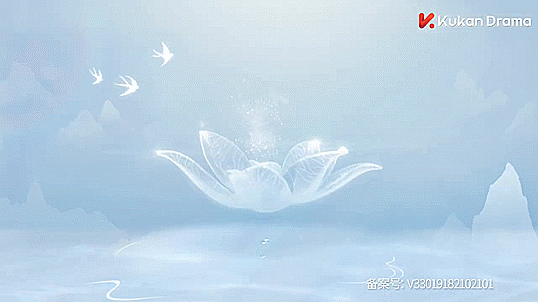
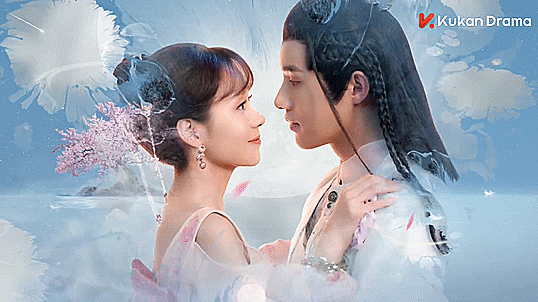
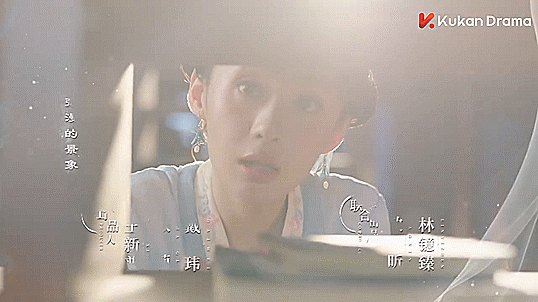
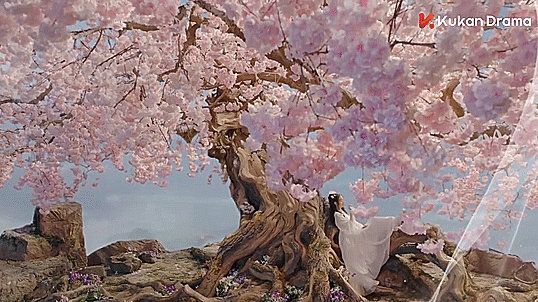

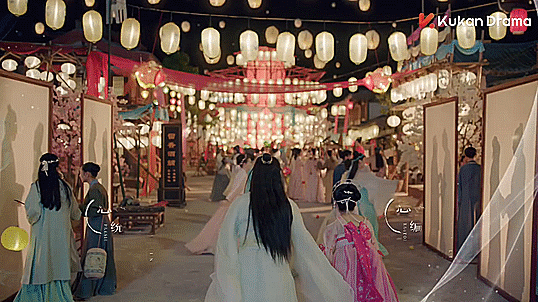


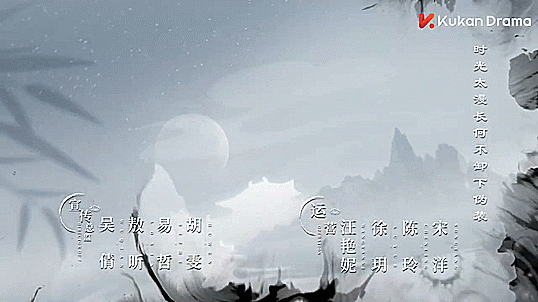

Cdrama: Believe in Love (2022)
Gifs of Intro of cdrama “Believe in Love”
Believe in love EP01 | Huang Sheng Chi, Zheng He Hui Zi, Kevin Xiao (CC subtitle)
Watch this video on Youtube: https://www.youtube.com/watch?v=RZ6ys_-Ik7I

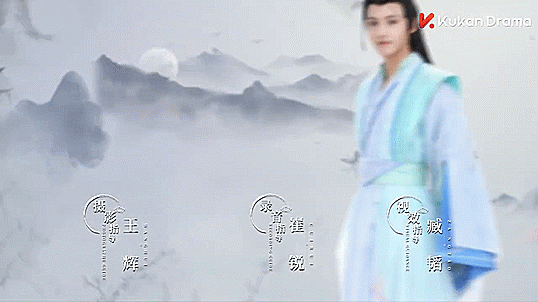
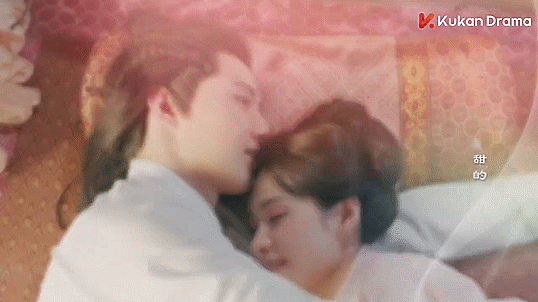

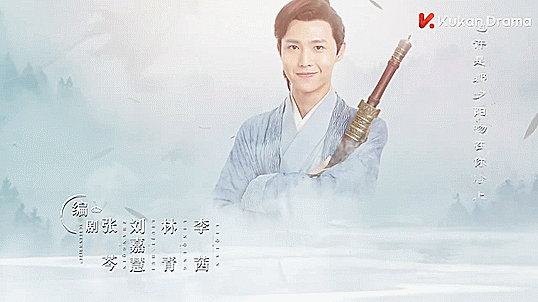


#Believe in Love#花间新娘#Hua jian xin niang#Flower Bride#2022#cdrama#chinese drama#youtube#episode 1#Youku#KUKAN#Huang Sheng Chi#Zheng He Hui Zi#Zhu Rong Jun#Kevin Xiao#Xiao Kai Zhong#Hou Dong#Ma Xin Yu#Li Ming Yuan#Zhang Xin Lei#Shen Yang
12 notes
·
View notes